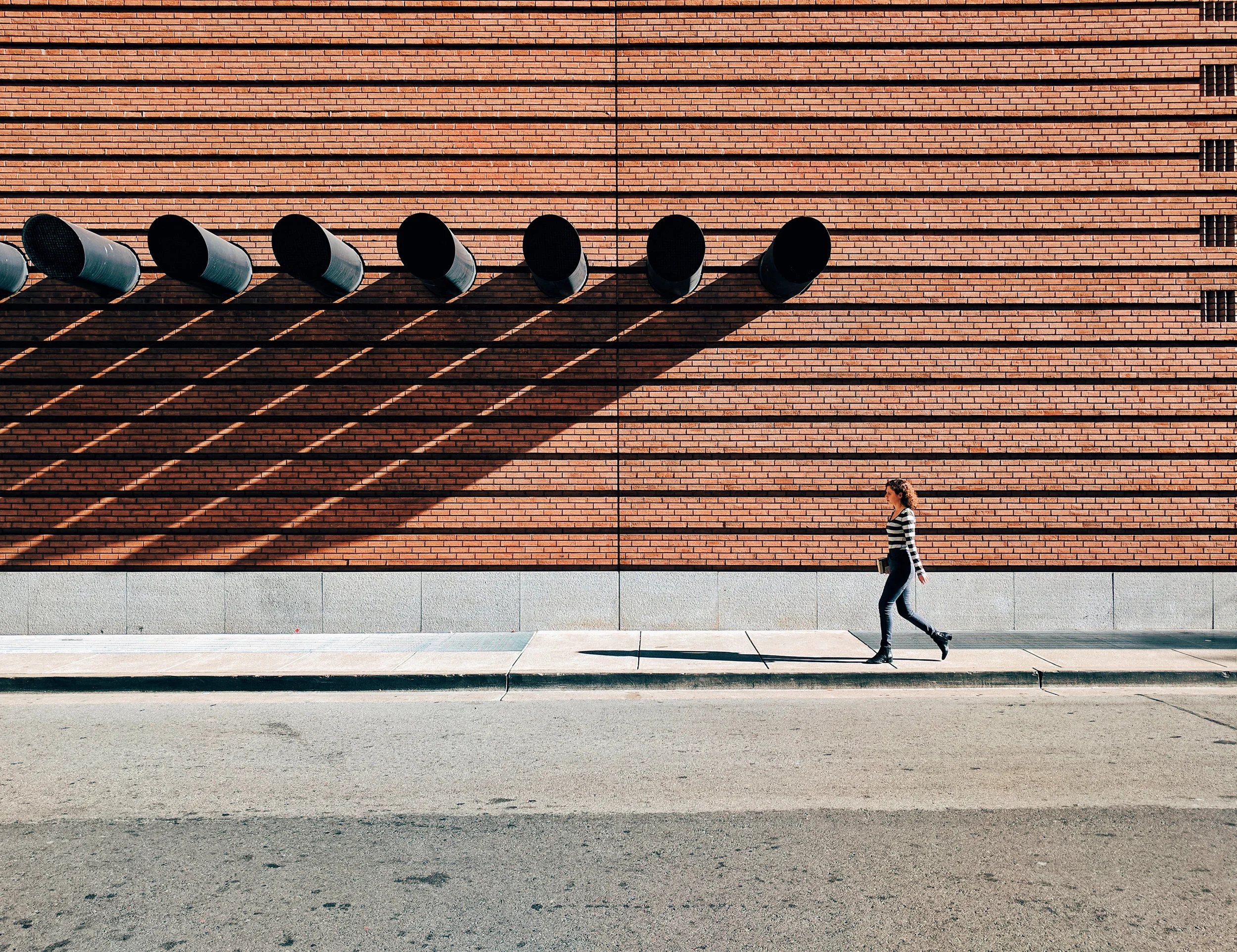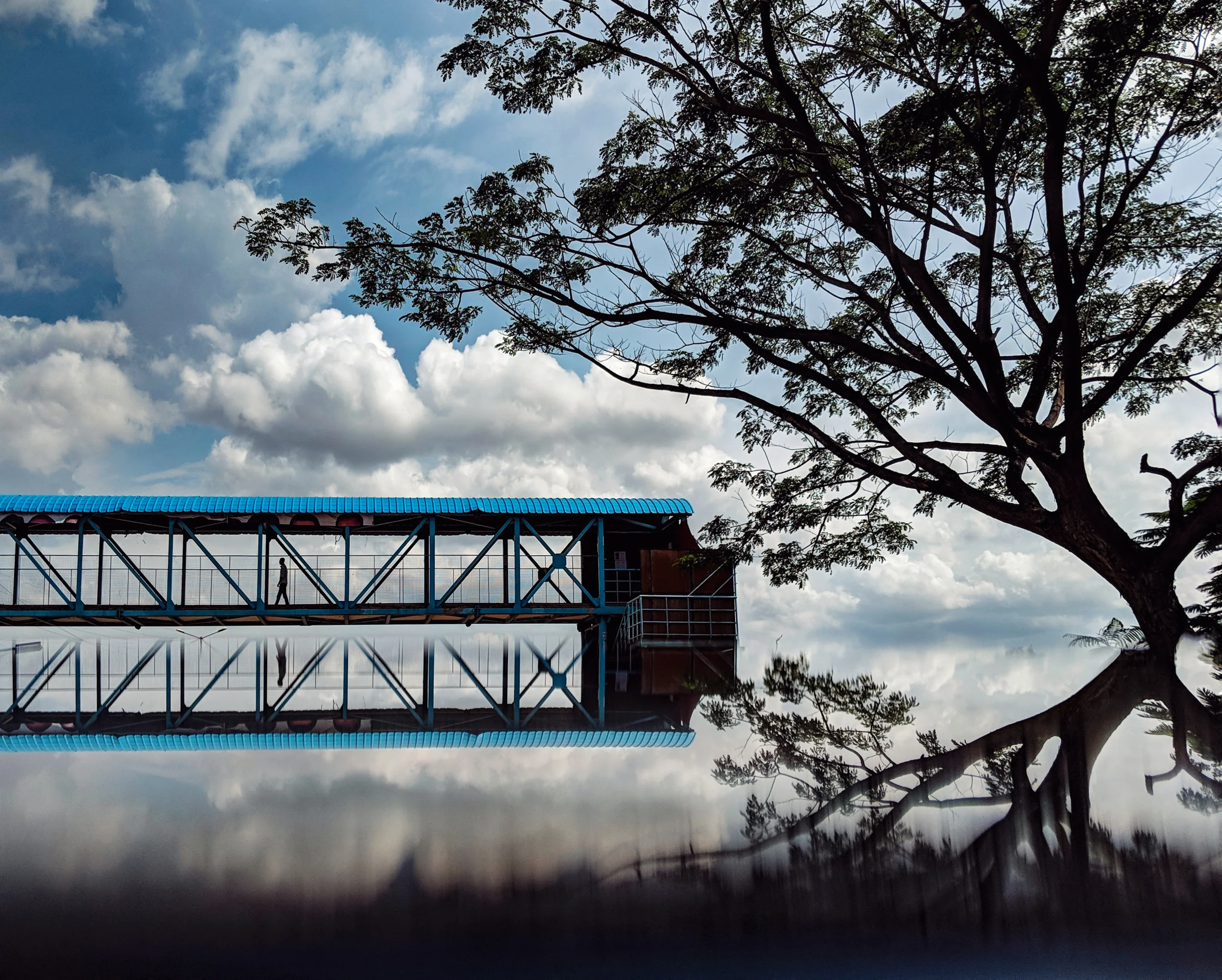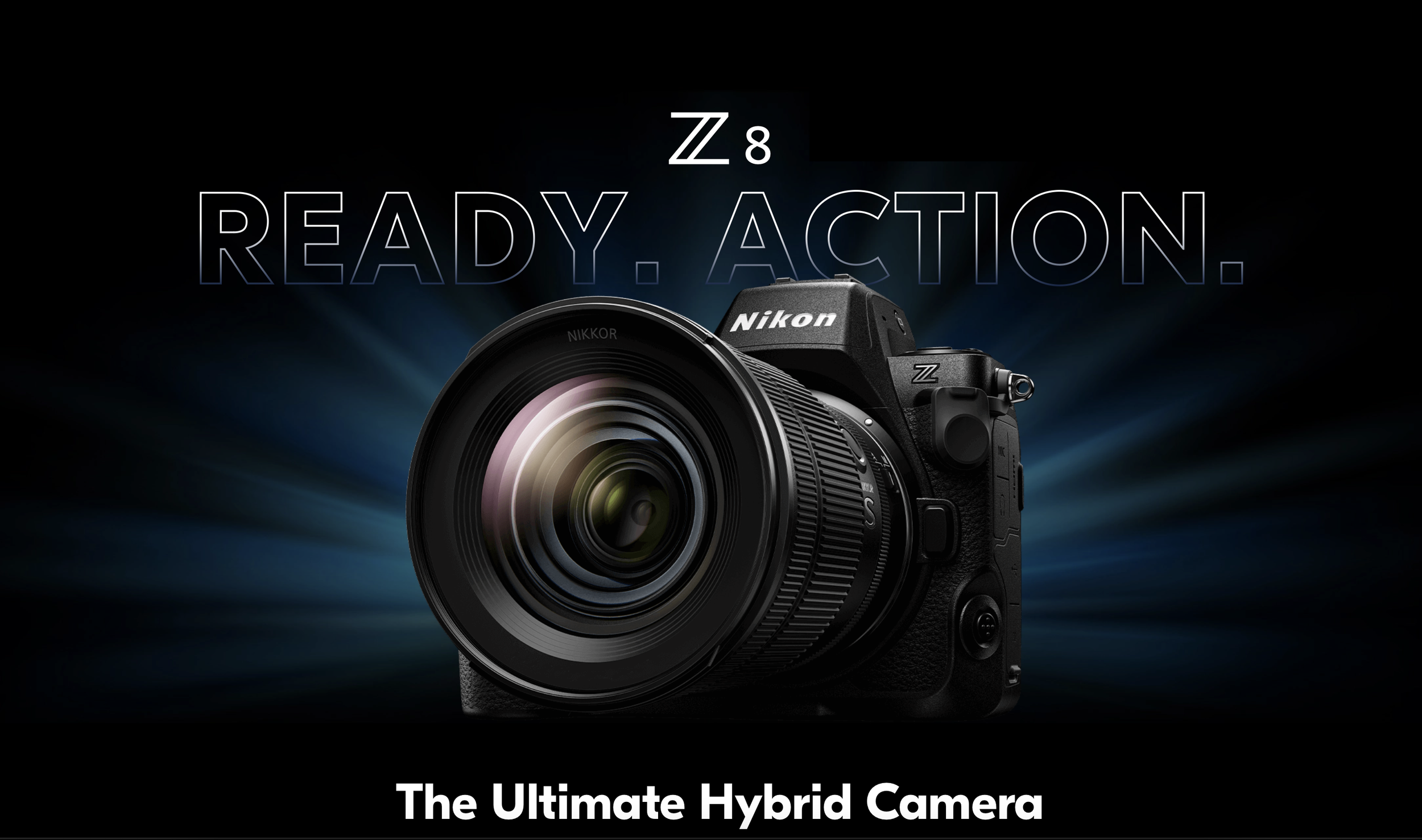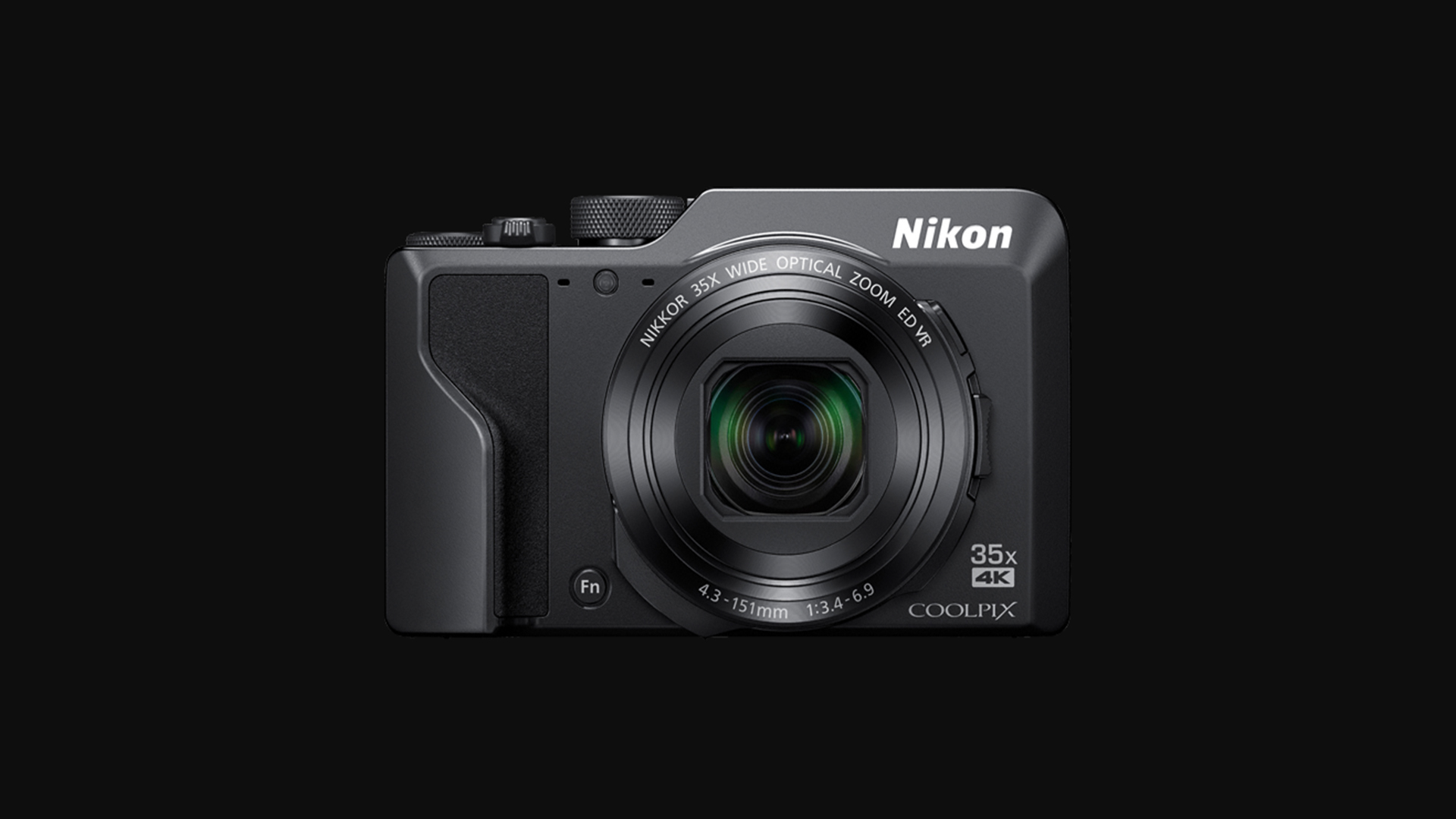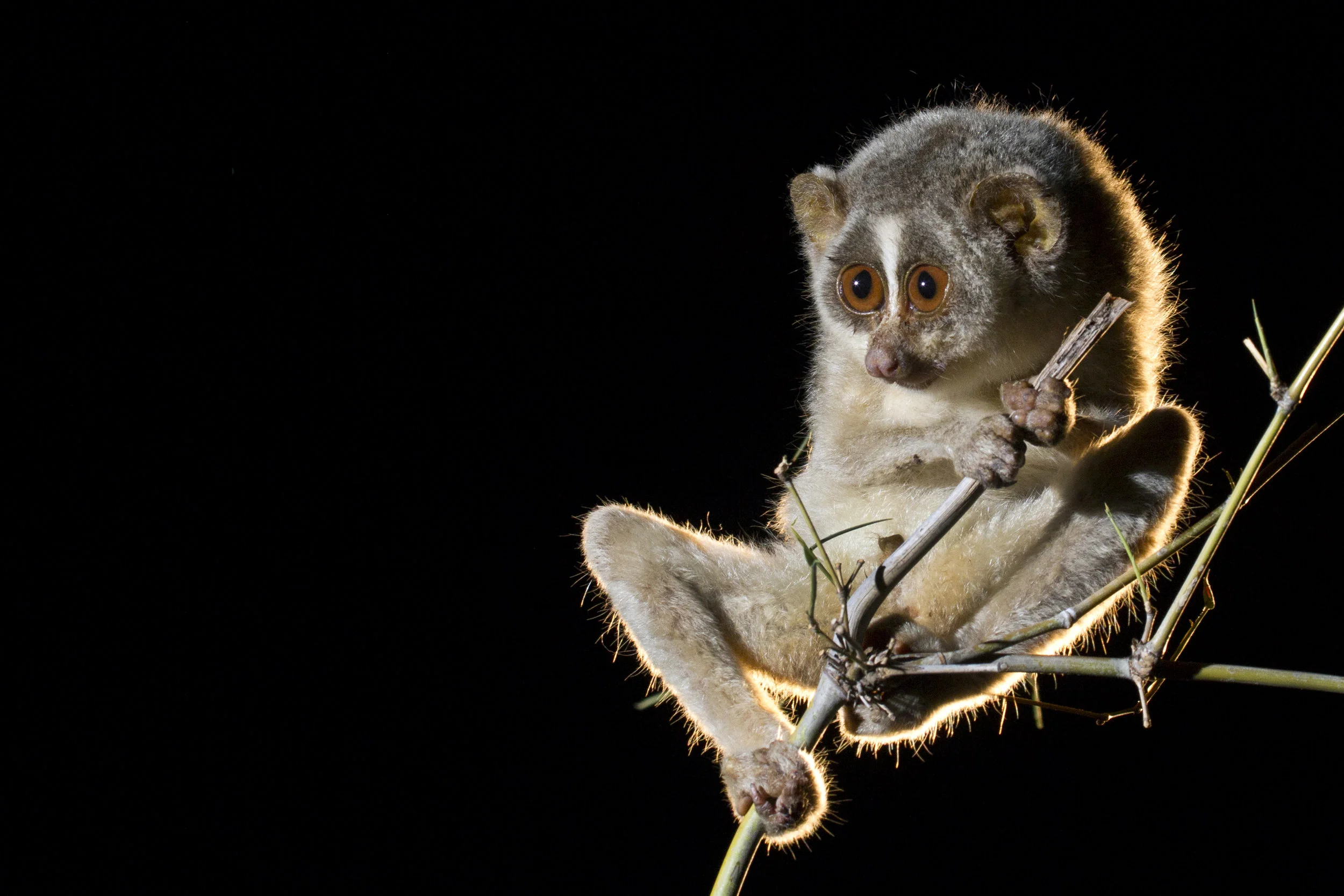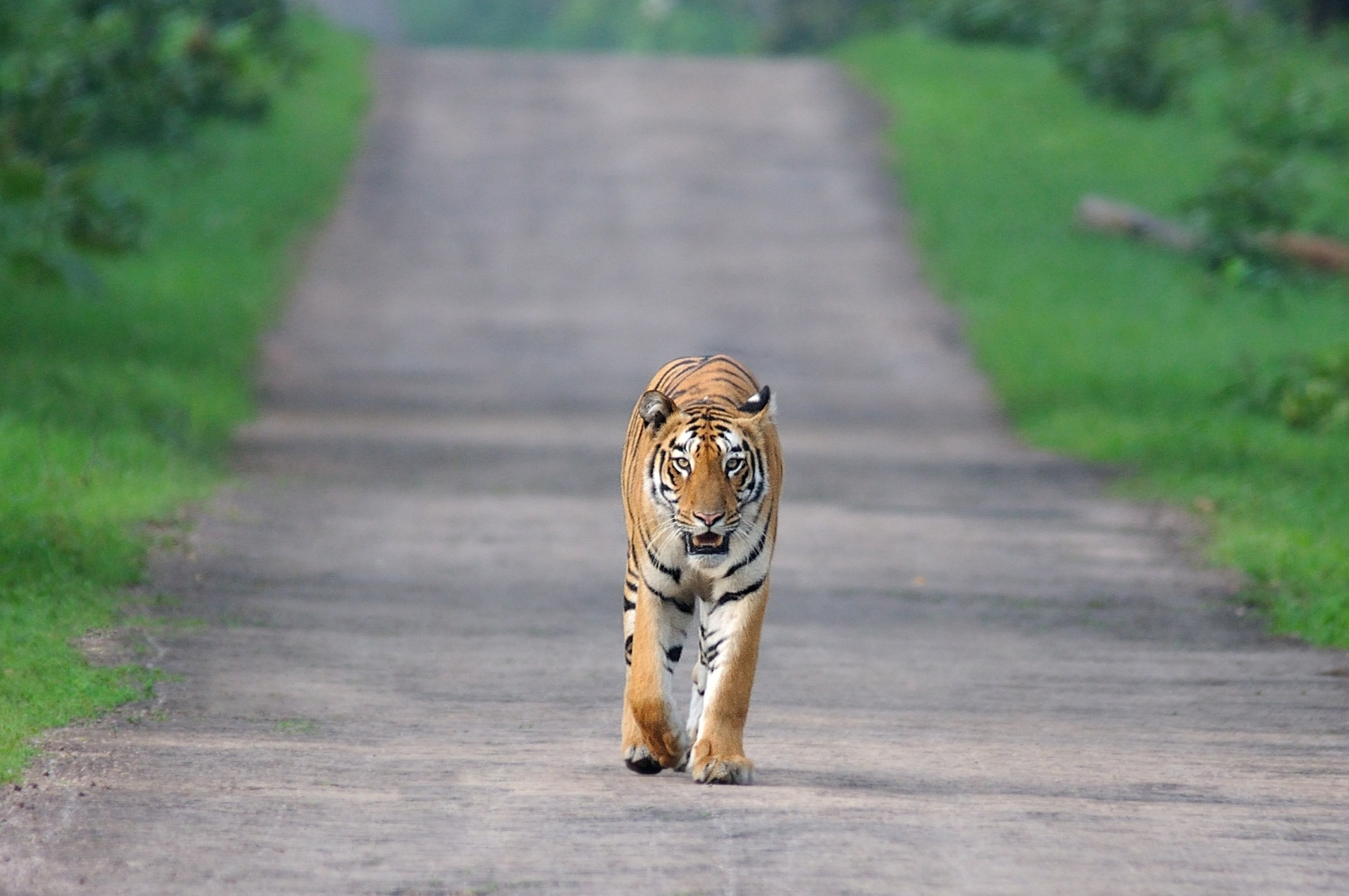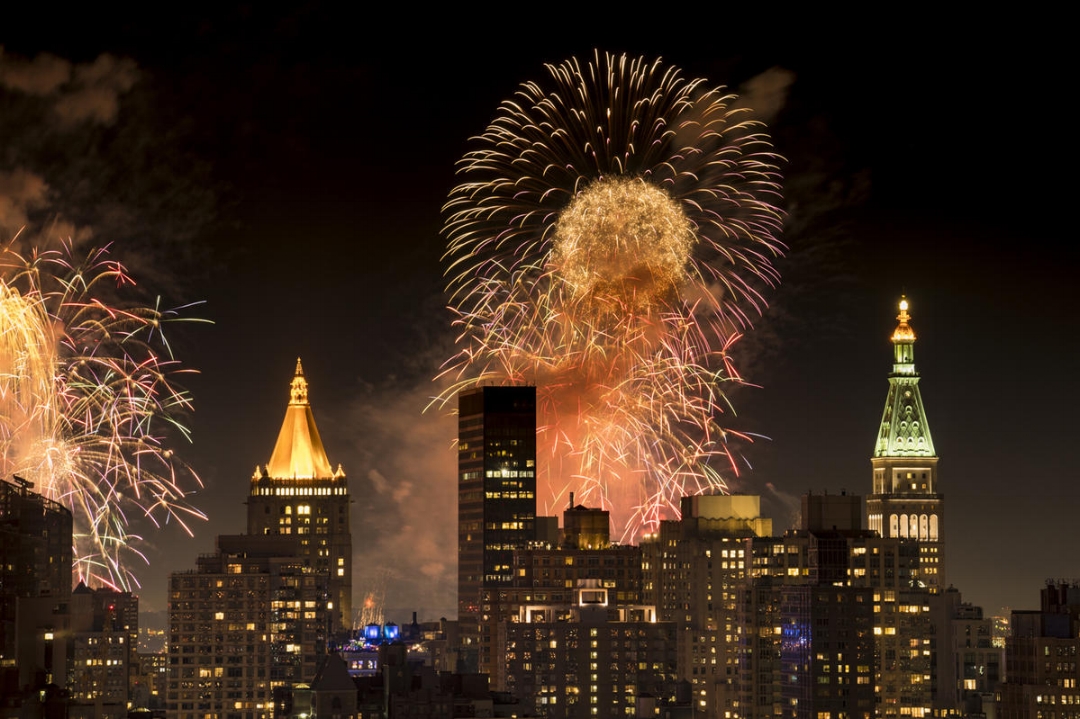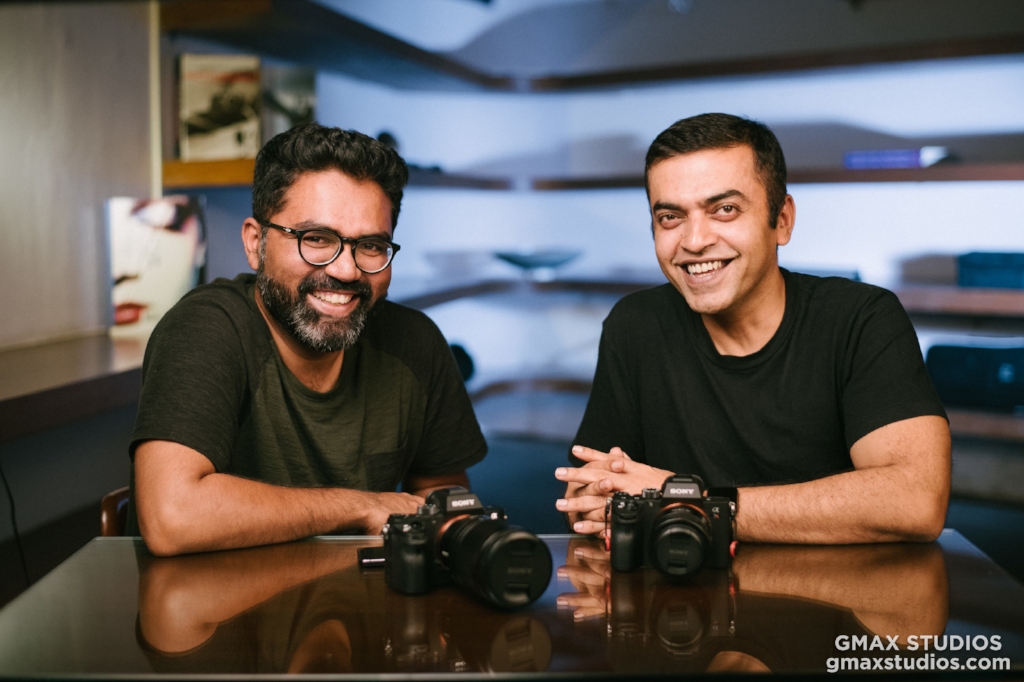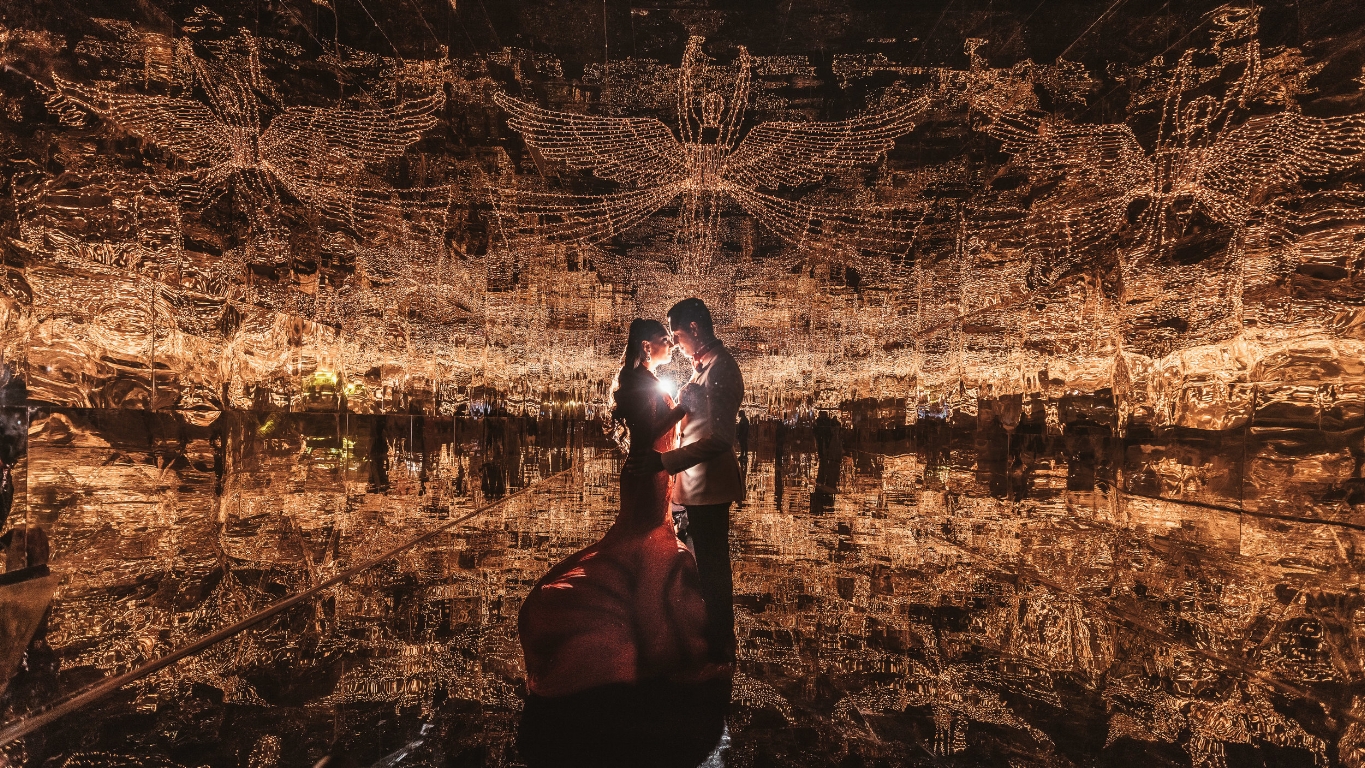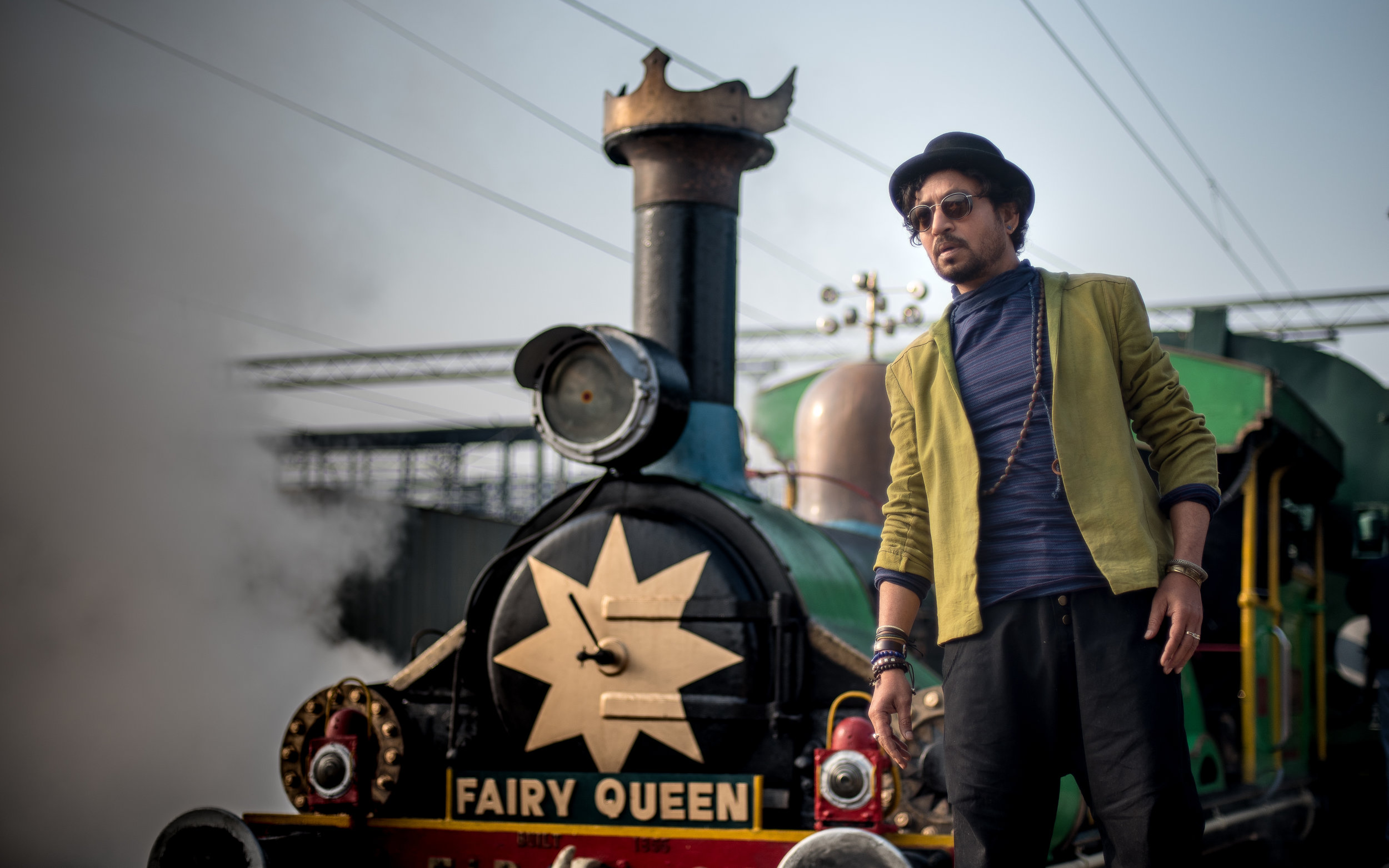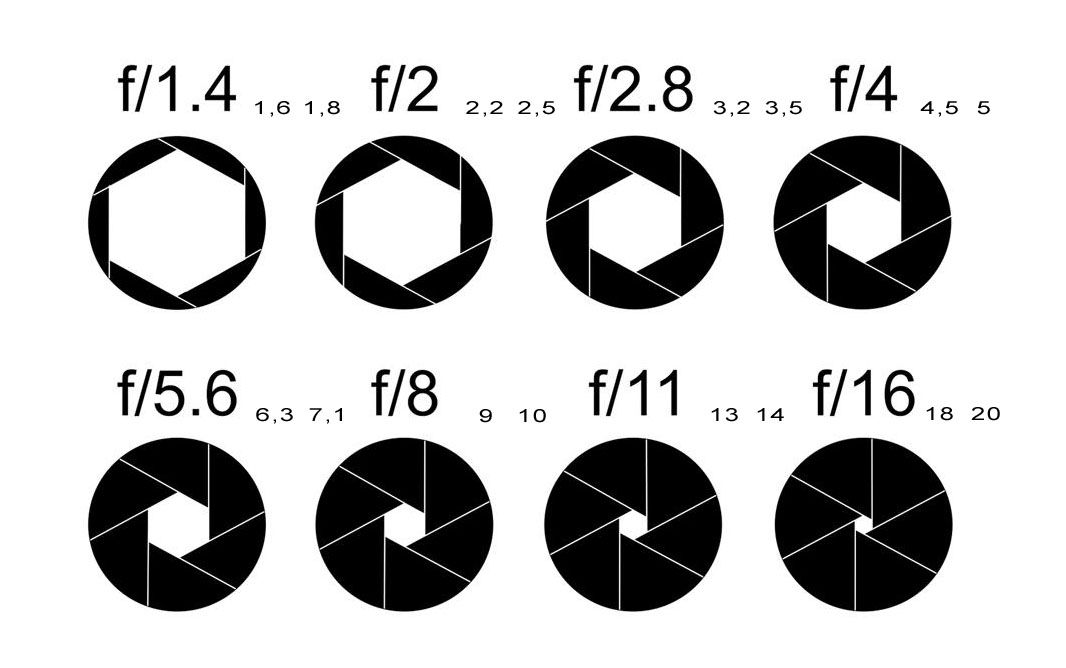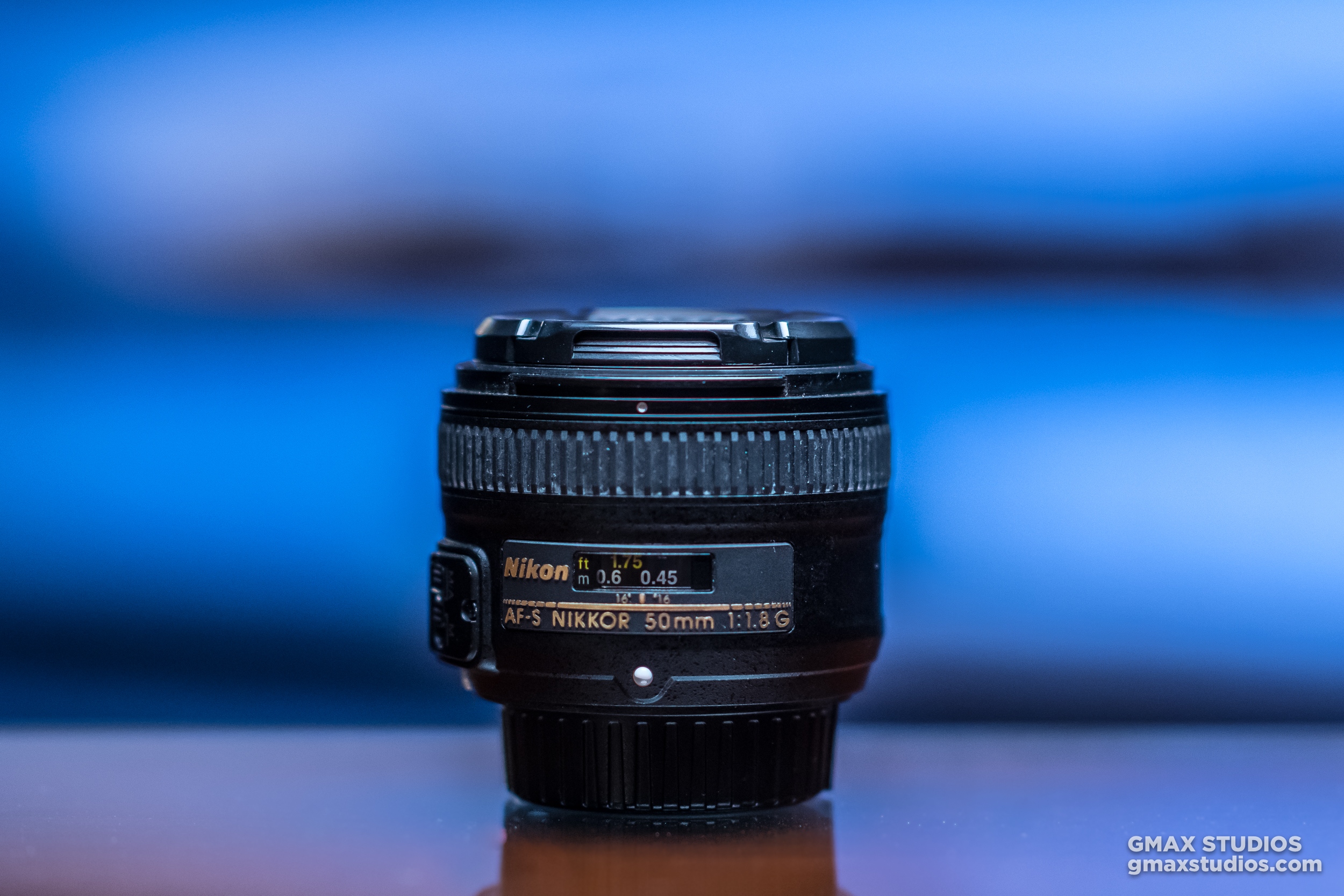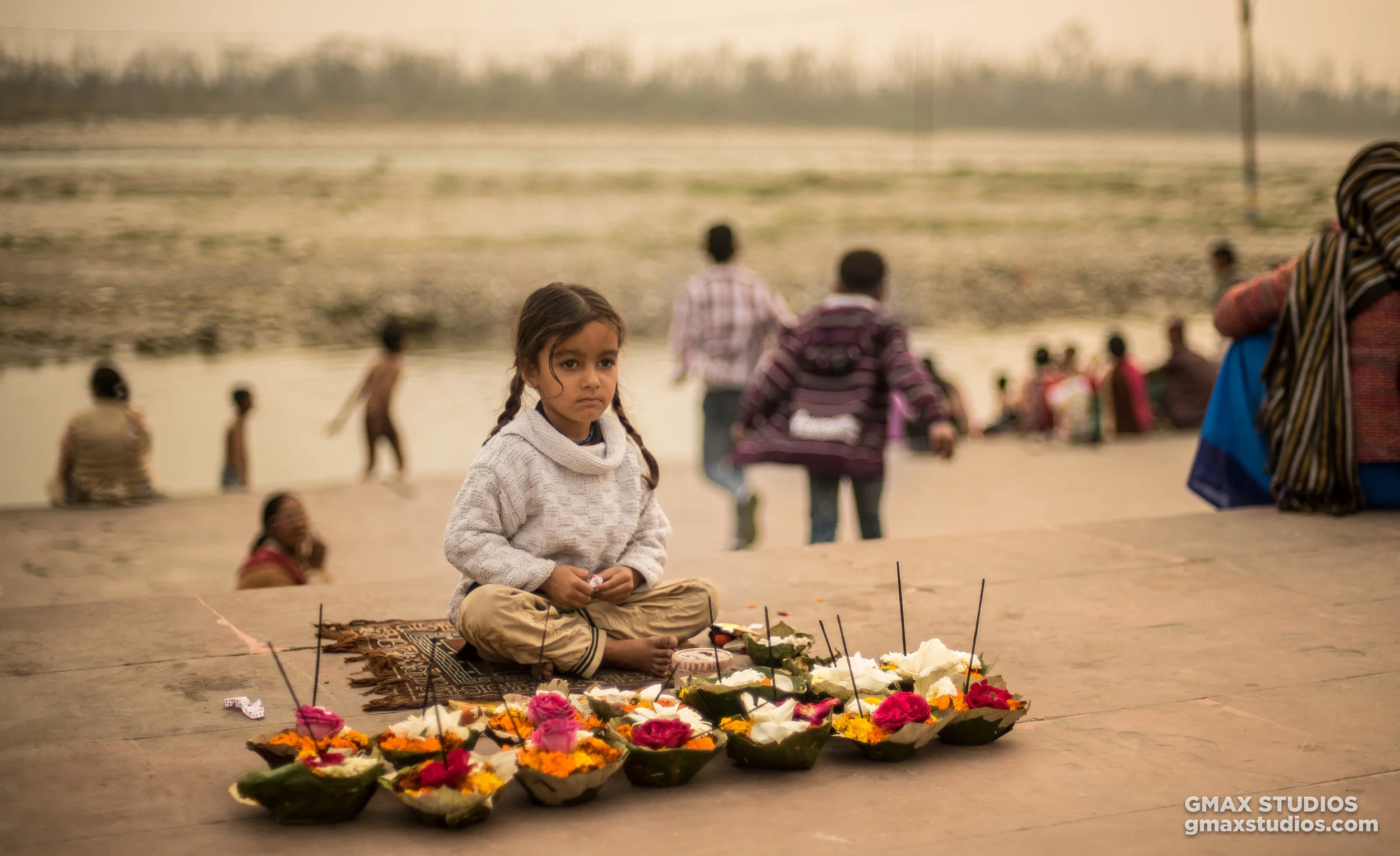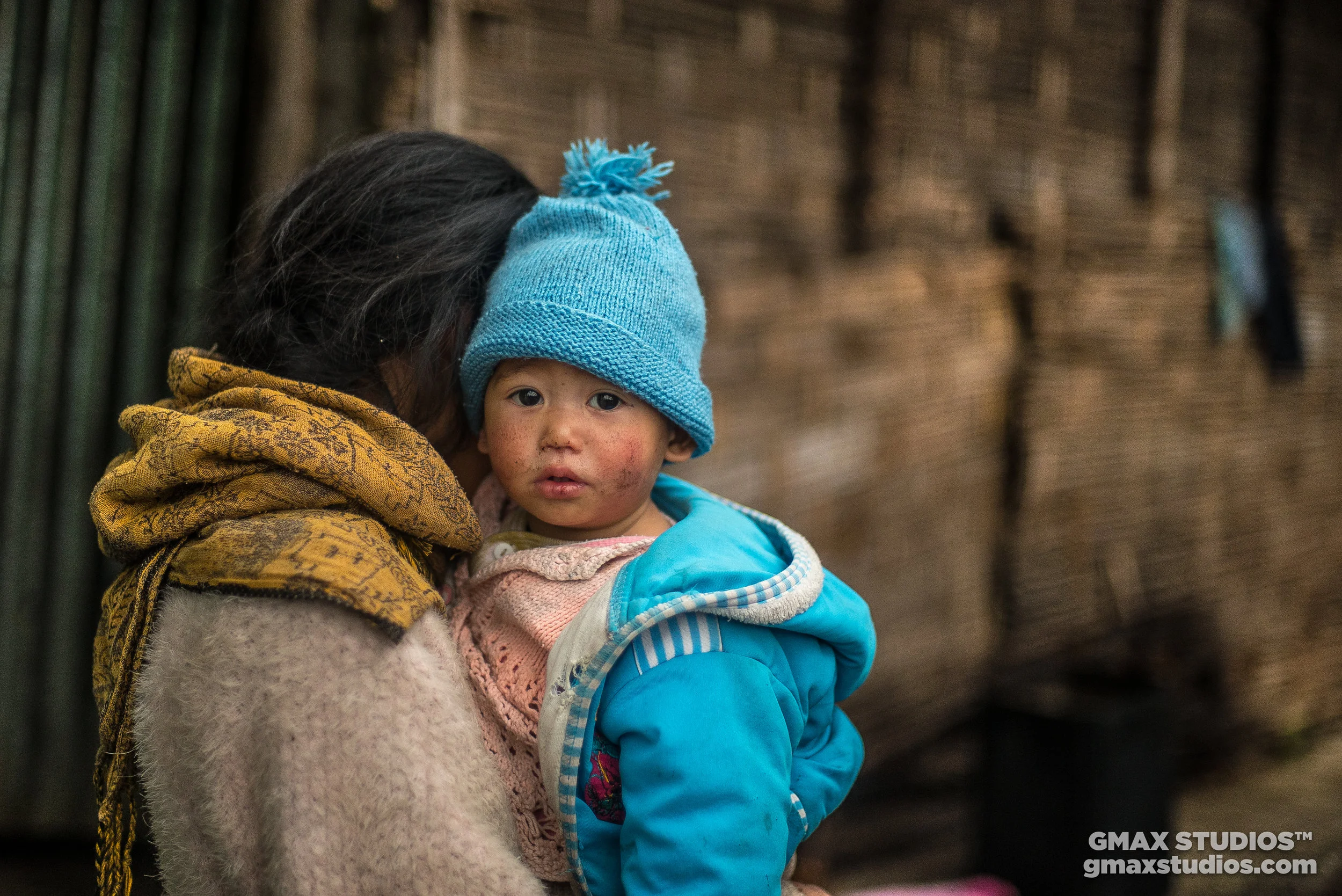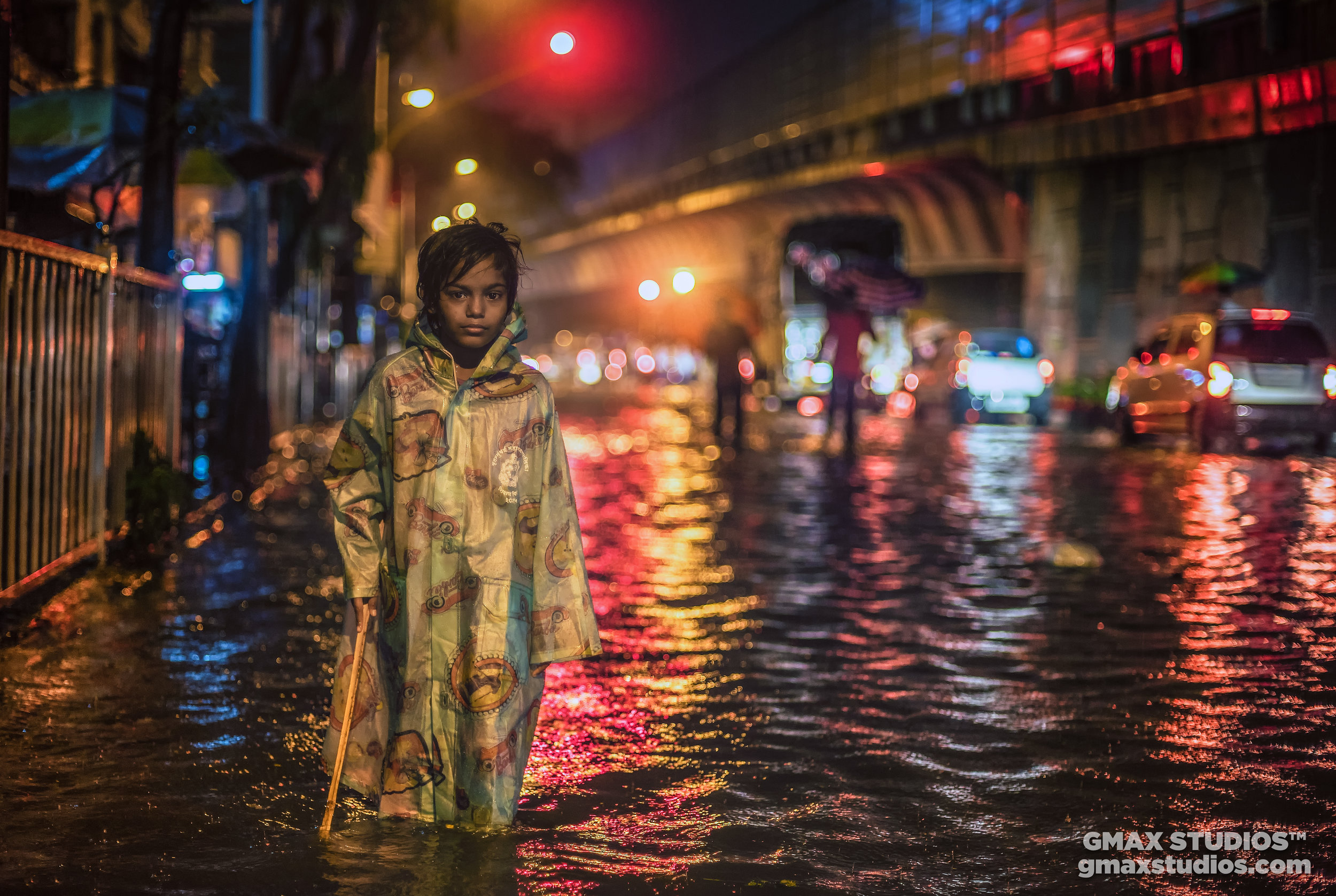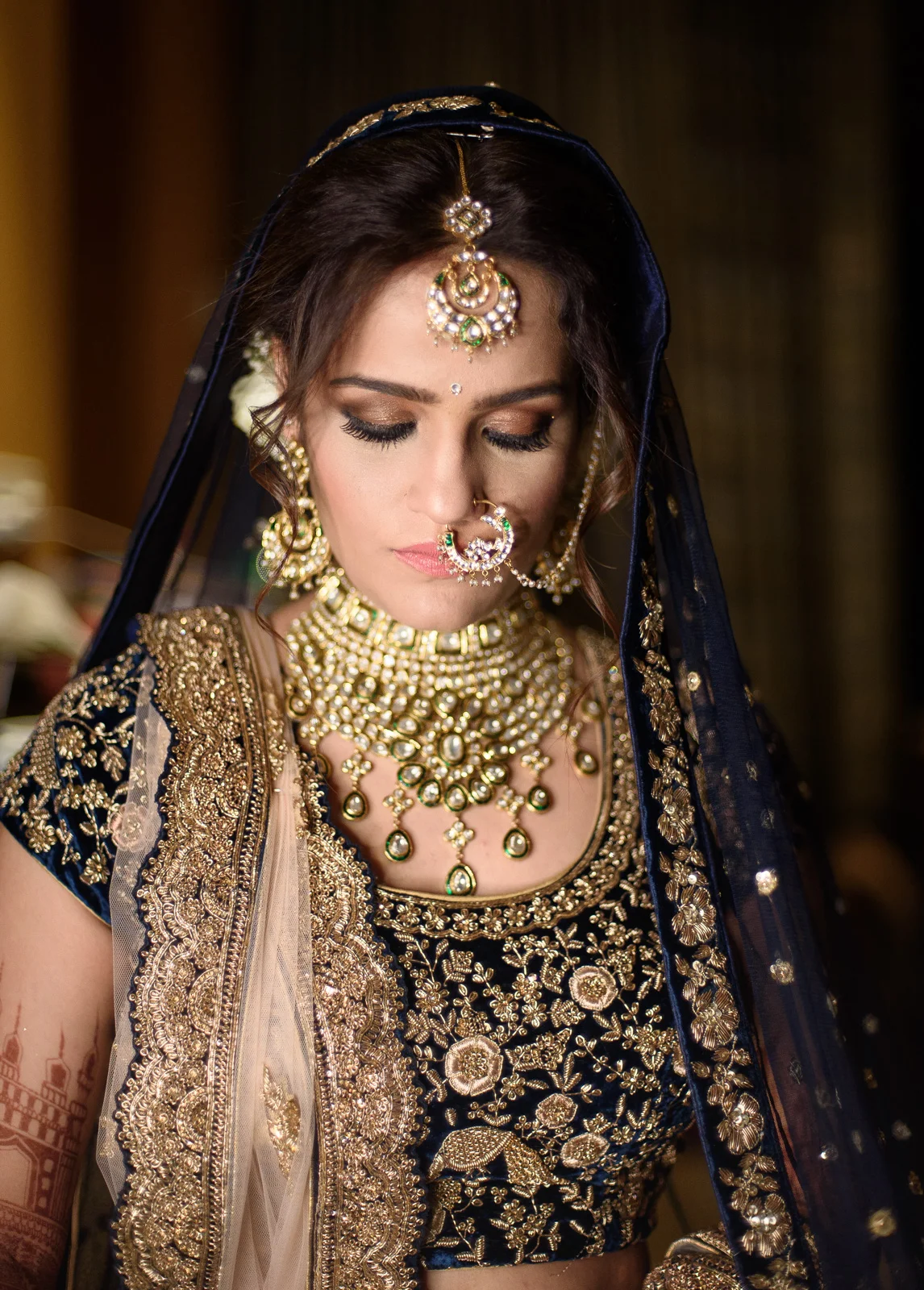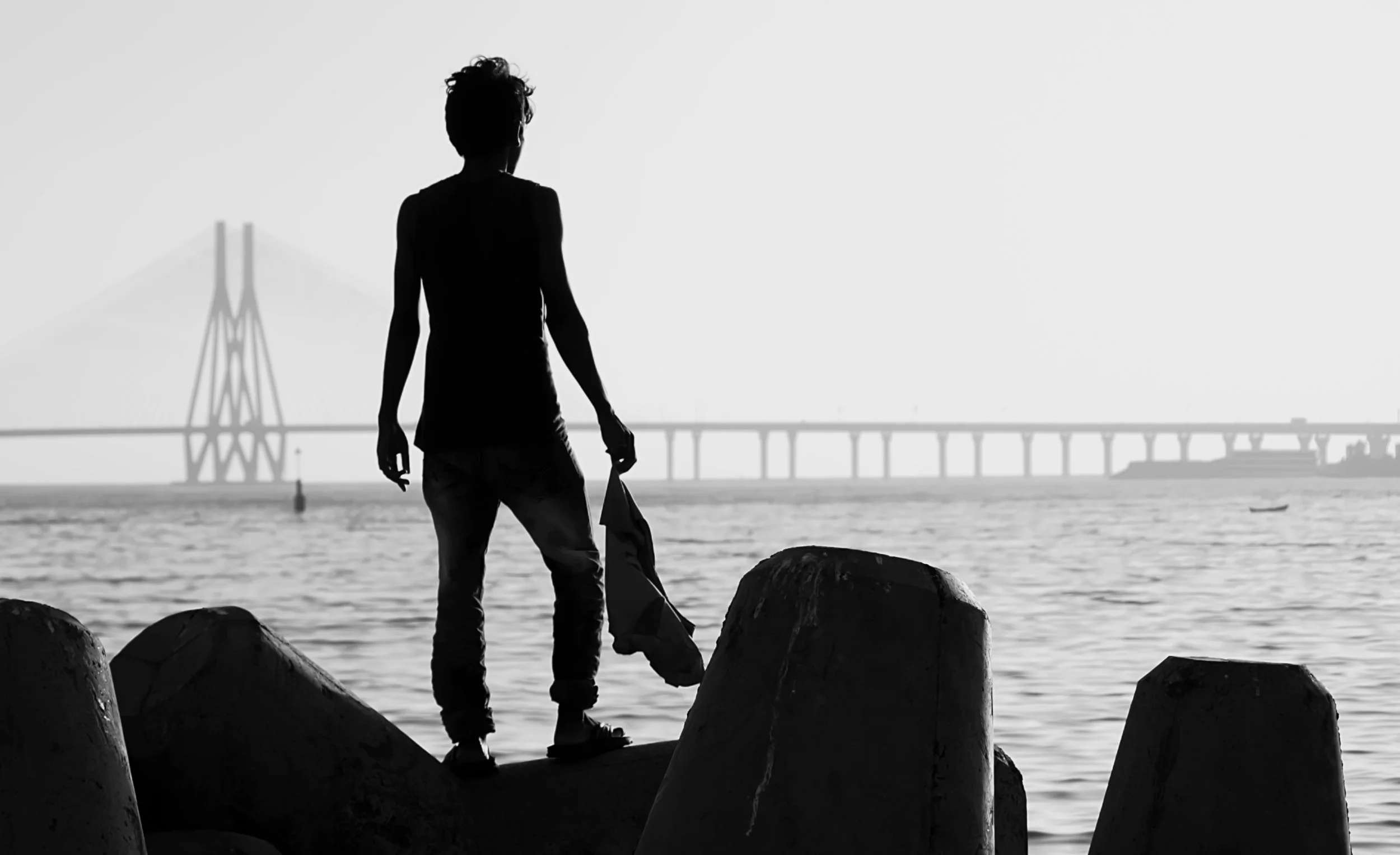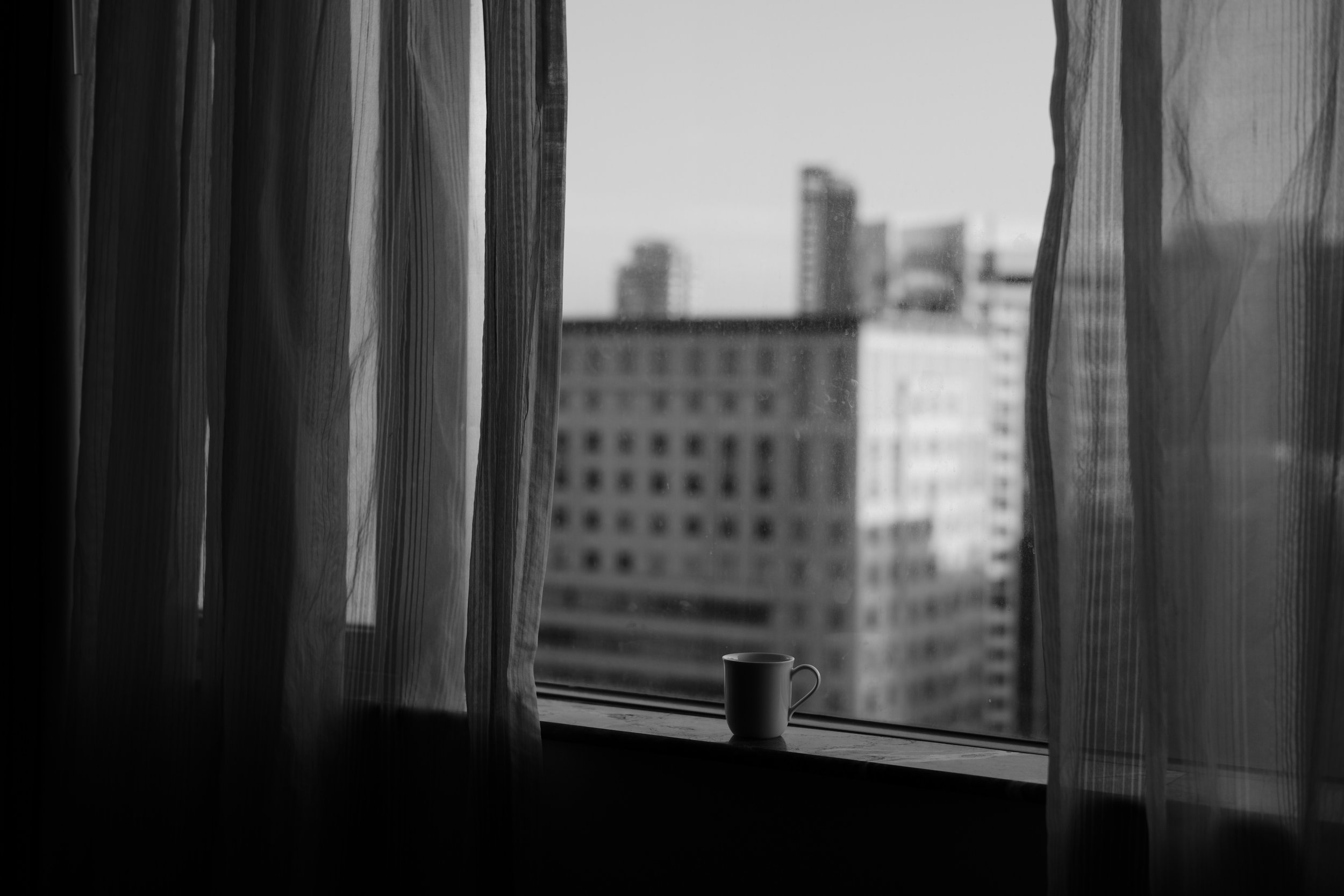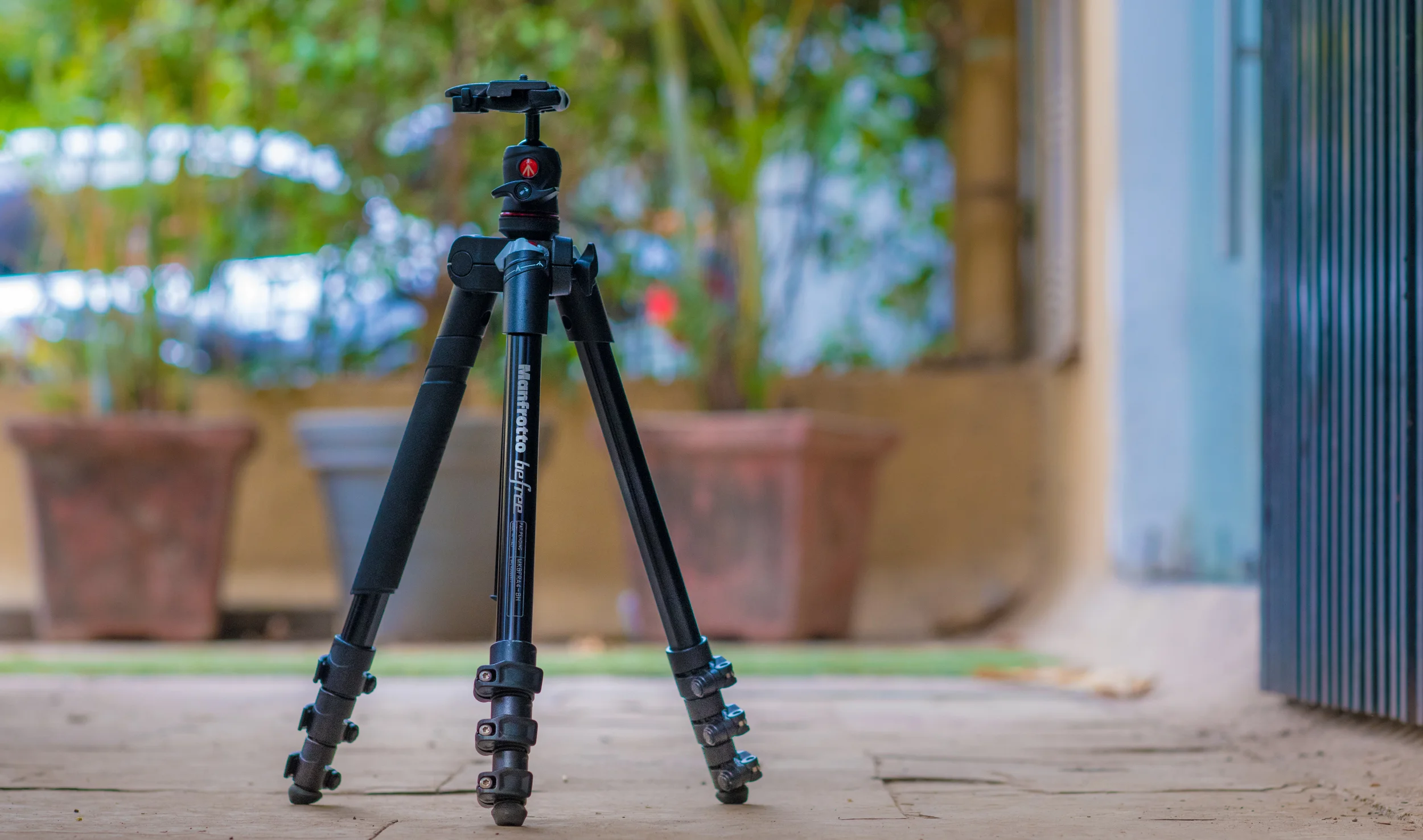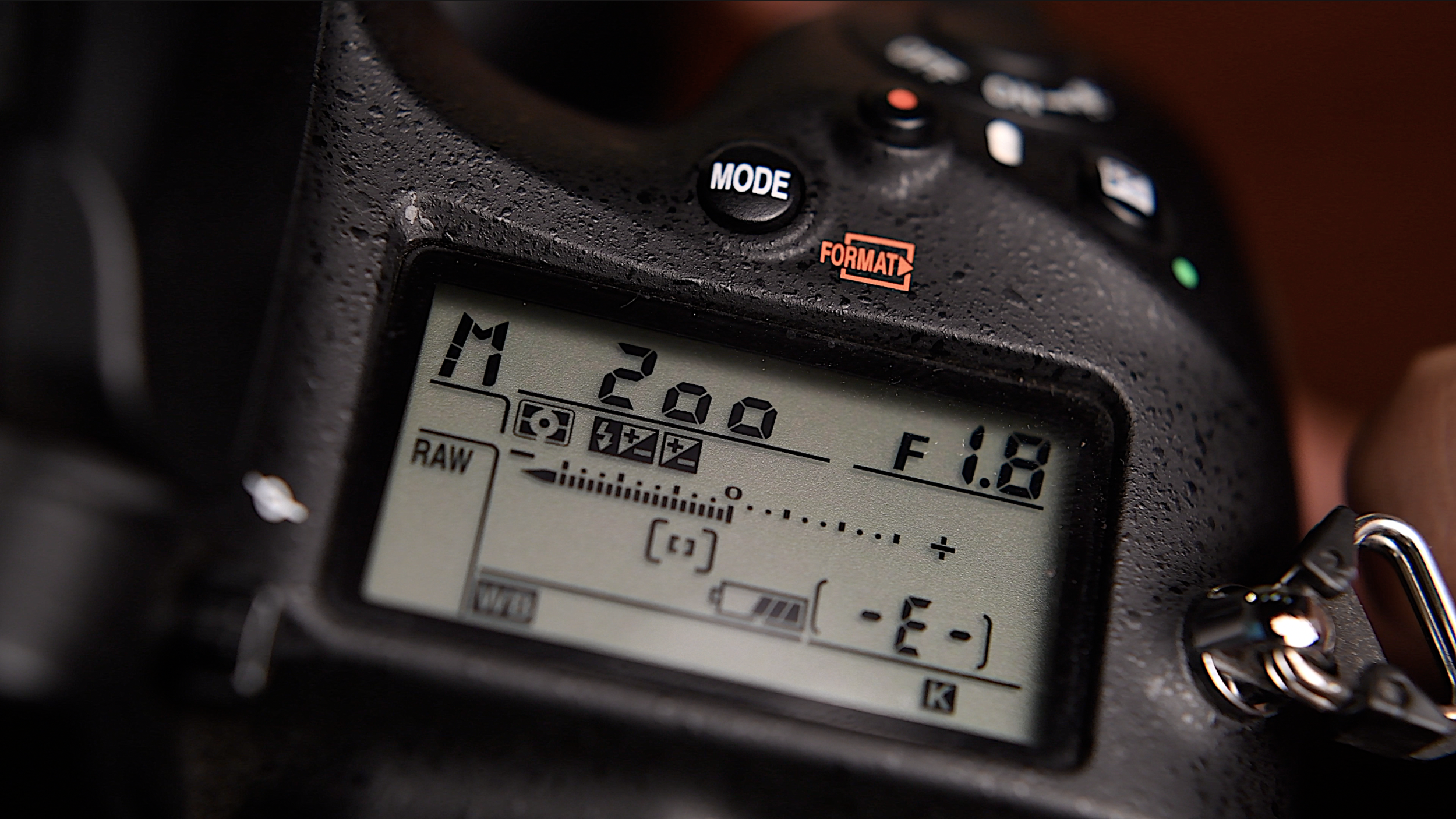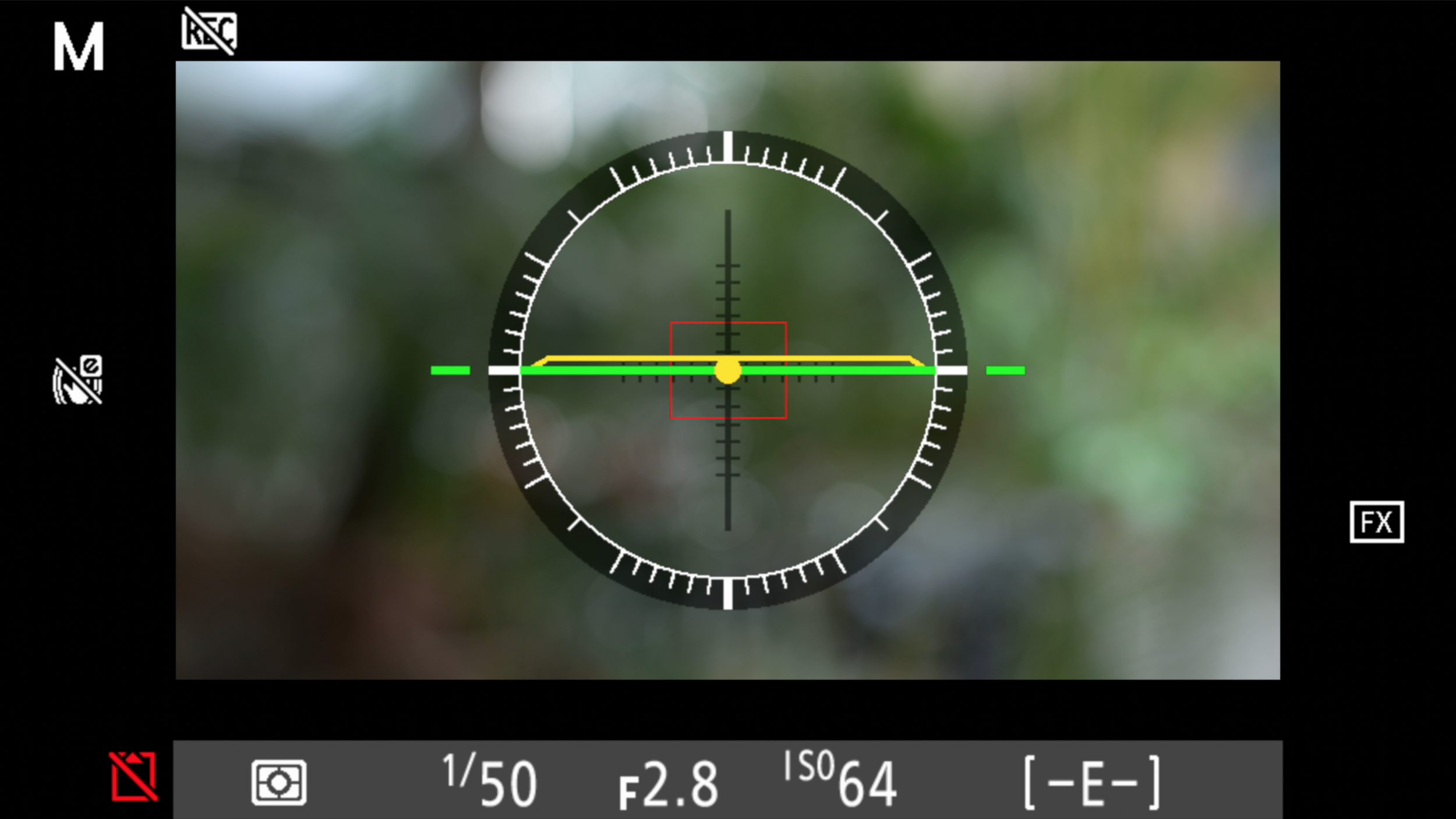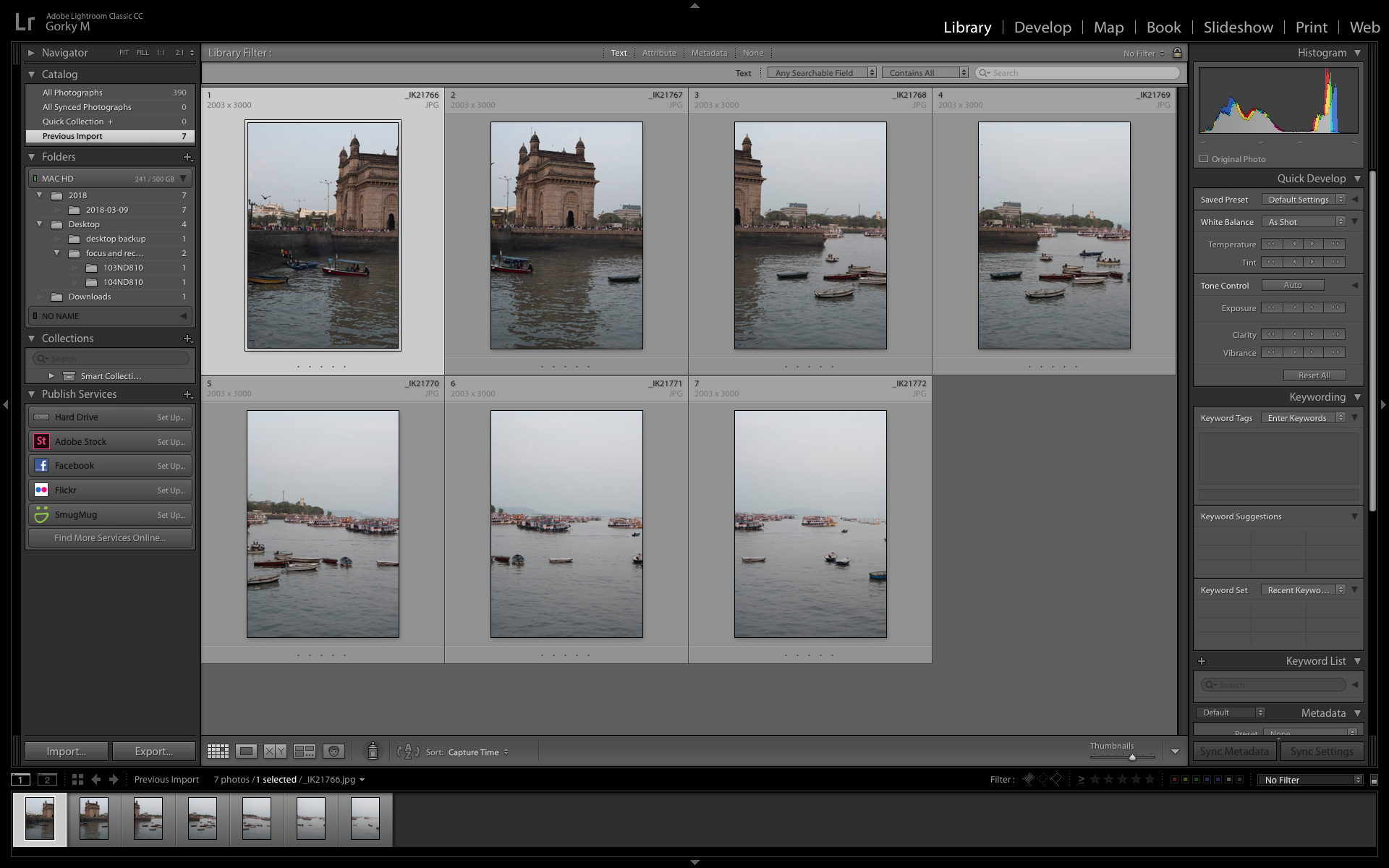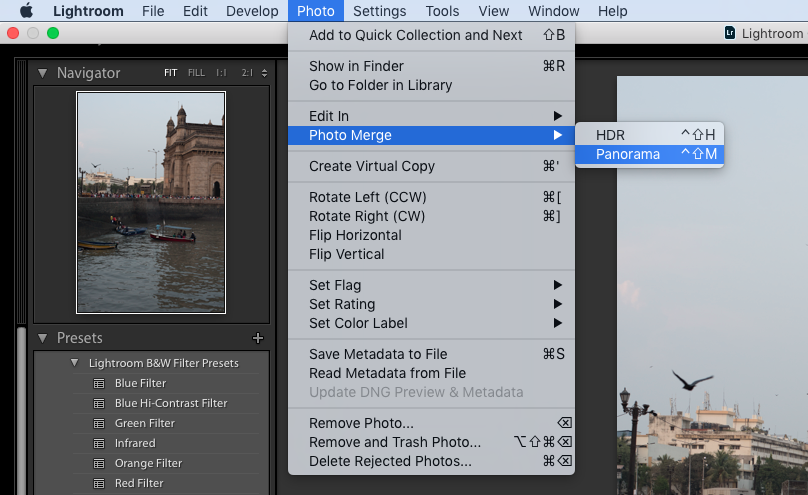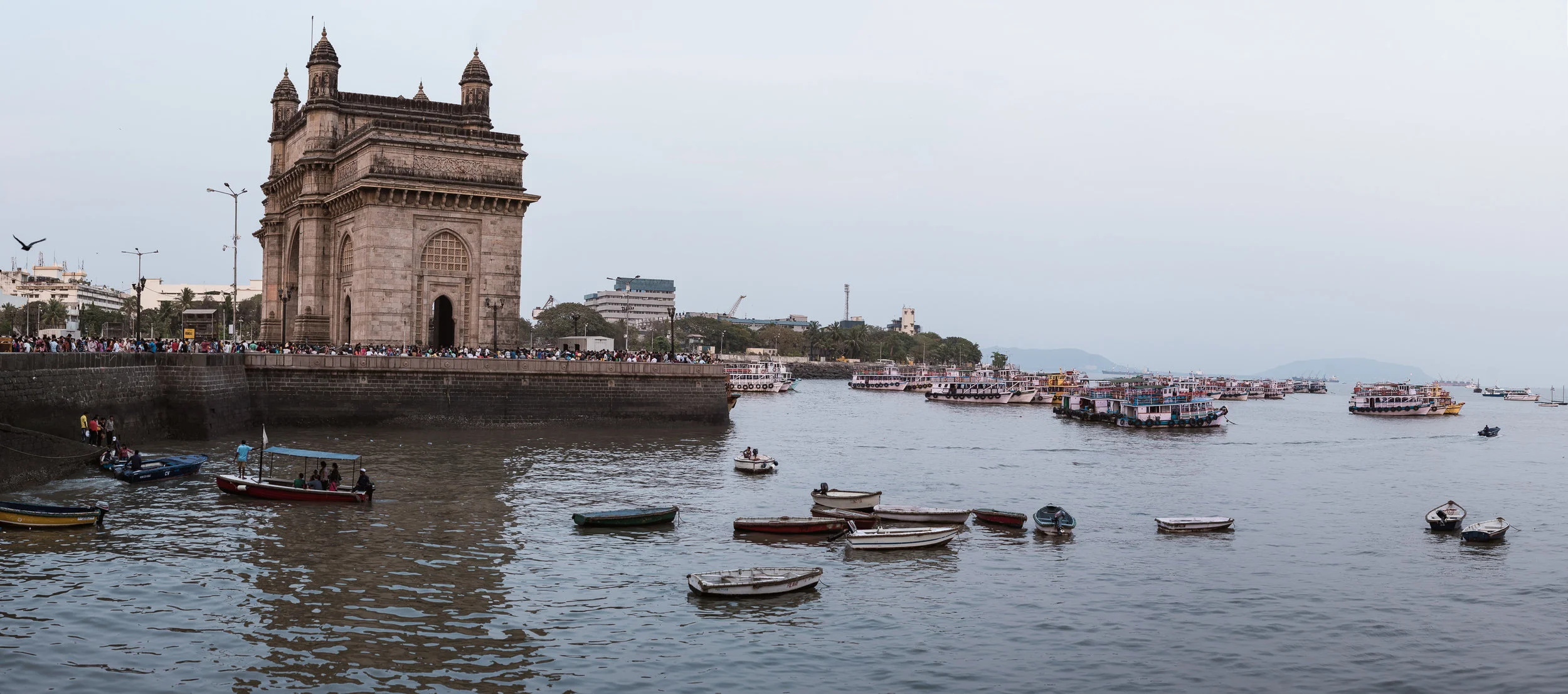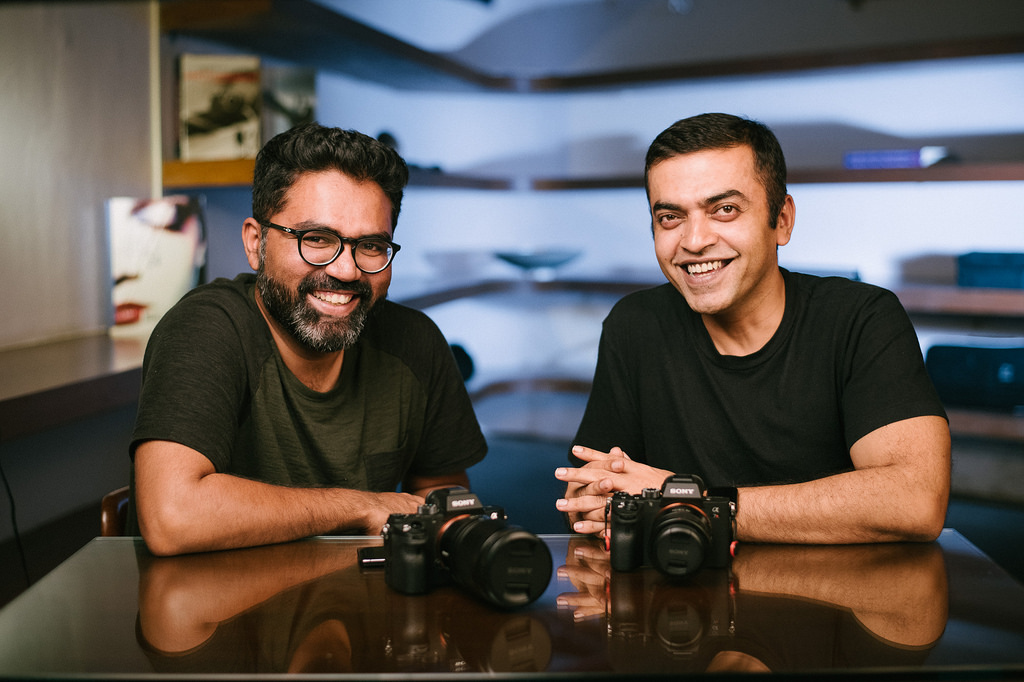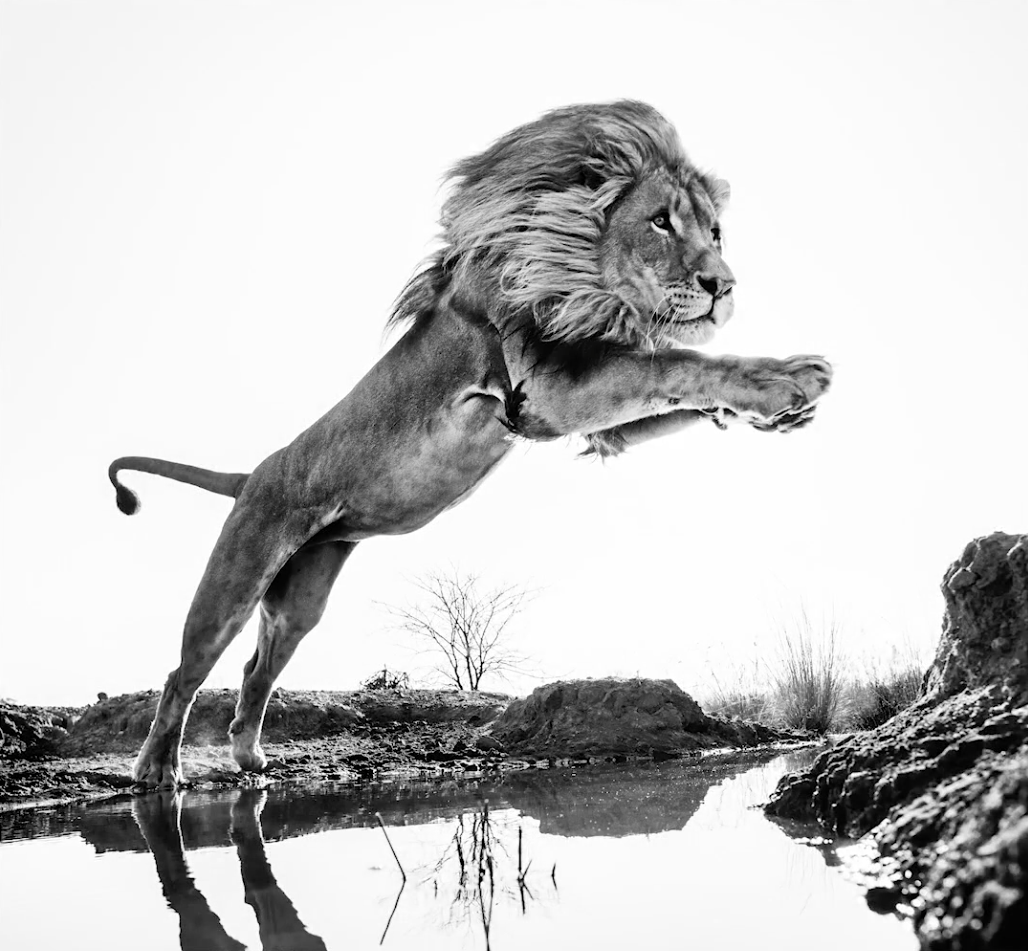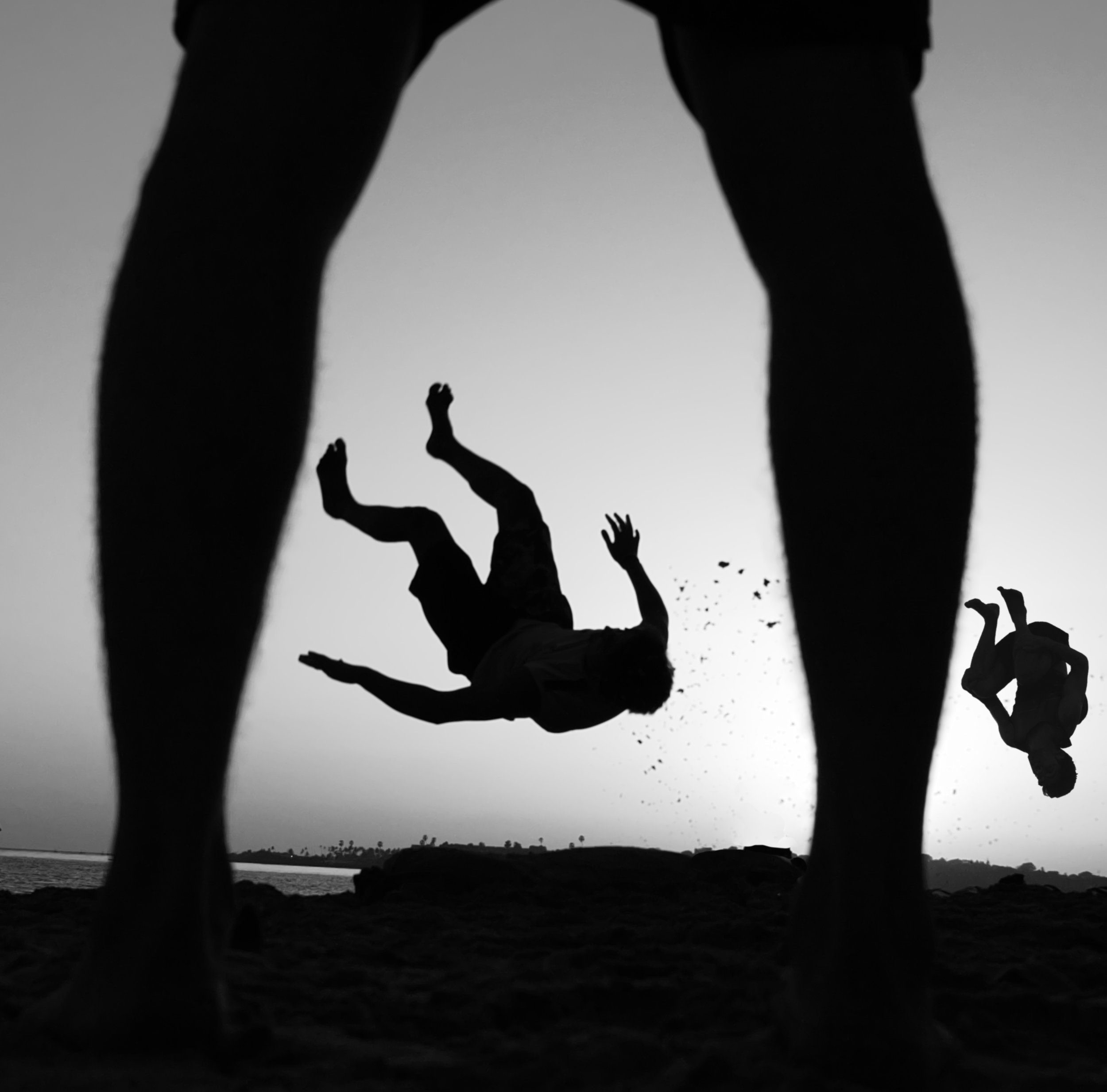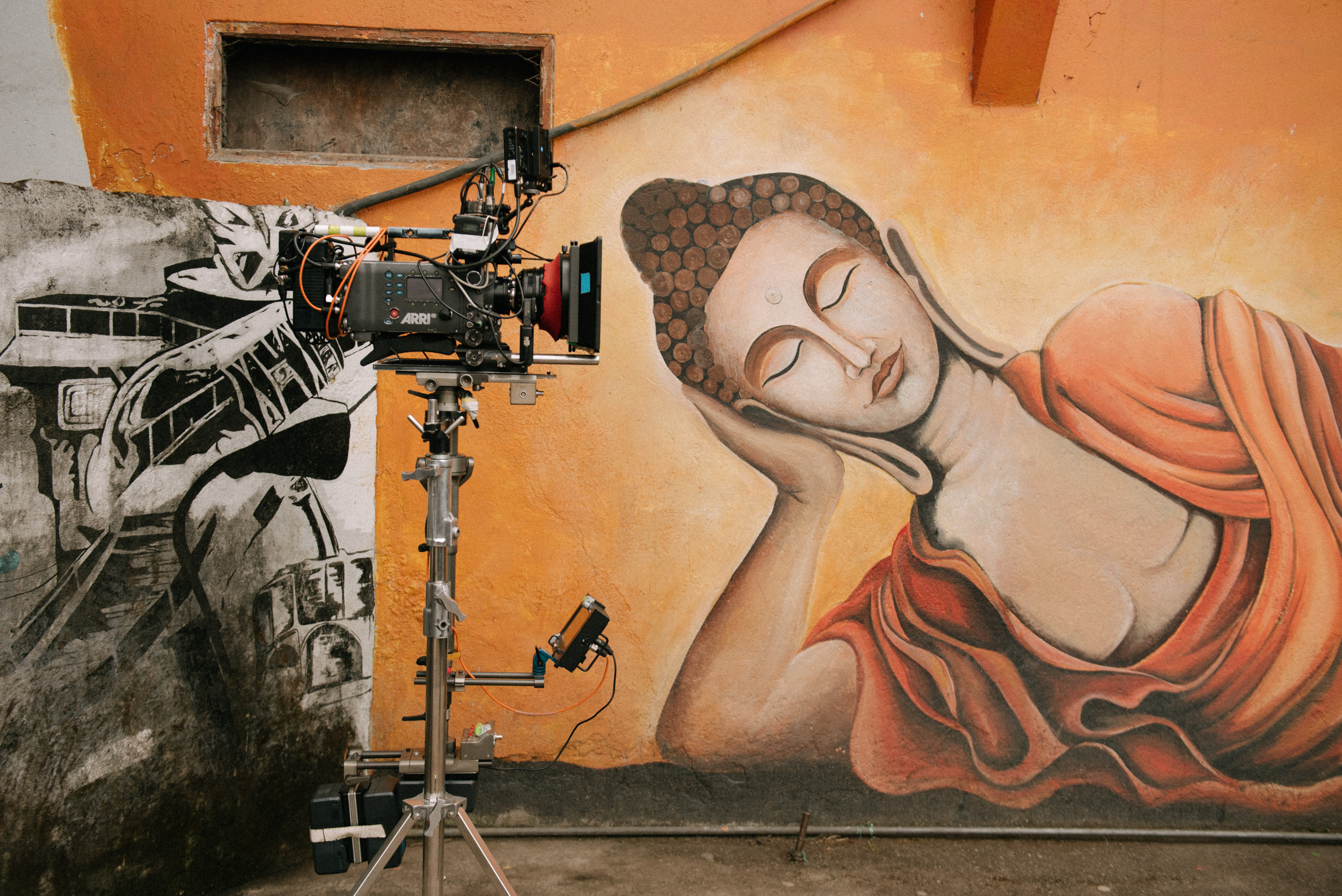
Shooting on mobile phones takes more effort | Auditya Venkatesh Answers | In Frame with Gorky M, Episode 5
Auditya Venkatesh debunks the legend that taking pictures with your smartphone is easier than shooting with a professional camera.
If you’re Indian, and you’re a photographer - it’s quite likely you’ve heard of Auditya Venkatesh. He’s leading the army of smartphone photographers all around India. And it’s not like he only shoots with smartphones, he shoots a ton of commercial stuff too - but he wants to get the message out there that equipment shouldn’t limit you. It should empower you.
Yes, this image was taken on a smartphone. © Auditya Venkatesh Photography.
“You want to be shooting with whatever equipment you have on you.” says the acclaimed photographer and cinematographer (now a director of photography in movies as well).
Gorky M caught up with him backstage at Pepx photocon, Mumbai, where he was giving a talk and engaging his fans, and the maverick dished out plenty of insights and tips for our viewers.
“As cliche as it sounds, the most important thing is being yourself when taking pictures.” What Auditya means is that while there may be many images that people enjoy looking at, it’s important to go with what you enjoy shooting most. They could be portraits or landscapes, you must work on the kind of story YOU want to go with.
Auditya also debunks the legend that taking pictures with your smartphone is easier than shooting with a professional camera because you can just whip it out and take pictures.
“If you’re trying to shoot something more seriously,(with a smartphone) it’s actually a lot more effort. You have a really small sensor to start with, you barely have any depth of field to play around with, you get a lot more noise when shooting in low light situations. There’s a whole bunch of things (that limit you) actually. So it does take a lot more effort.”
© Auditya Venkatesh Photography
Check out the video linked at the end to know how Auditya takes mind boggling images on his smartphone.
Auditya shoots plenty of commercial assignments where the equipment he uses is top of the line, but he’s become synonymous with smartphone photography. He doesn’t mind that at all.
“I get a lot of emails and messages from people saying that they don’t have professional cameras and if it’s possible to still make images everyday. And that’s why I share so many smartphone photos. Fair enough if people think I only shoot on smartphones. ”
And there’s more where that came from. In episode 5 of our series ‘In Frame With Gorky M’, Auditya shares how it all began, and how he works. It’s a pretty interesting conversation between the two of them. Check out the entire conversation in the video embedded below. Don’t forget to subscribe. There’s more to come from GMax Studios in 2019.
Wildlife Photography - The Sad Reality | Diinesh Kumble in frame with Gorky M
We, the ones with reasoning, have it upon us to show concern for these animals.
Wildlife Photography is supposed to be an art that’s bigger than itself. Because we, the ones with reasoning, have it upon us to show concern for these animals.
“Wildlife photography is a genre of photography concerned with documenting various forms of wildlife in their natural habitat.”
Photograph by © Diinesh Kumble
As a wildlife photographer, you try to capture the diversity and the behavior of these animals in their natural habitat because we don’t see them very often. But the burgeoning of social media and the availability of top end cameras in the hands of every person has also increased wildlife tourism in the last couple of years. What used to be a moment of awe has now turned into an opportunity to photograph a wild animal as a means of validation on social media. Enthusiastic tourists don't even read up on the rules and regulations before diving in with their cameras, and they seem to be getting more and more desensitized with every attempt or Safari.
There is also a need for high-end camera gear to be able to photograph these animals without becoming a nuisance, and most of the tourists forego these requirements because it’s a one time thing.
Live and let live. Photograph by © Diinesh Kumble
“Calling yourself a wildlife photographer adds a bit of glamour (to their personality). They think that they’ve done something. They’ve shot an animal for fun.”
About a decade ago, wildlife photography was conducted by passionate photographers who had to stick out in the wild, with no amenities like electricity or food. There were certain challenges to the art and only the ones who had planned enough were able to make a difference. There was a major emphasis on not disrupting the laws of nature. You could forget about cellphone receptions, too.
“What brought me to wildlife photography was the passion to be out in the open and amongst nature. ”
An increase in the popularity of wildlife photography combined with the desperation of forest officials to make a quick buck has enabled them to turn a blind eye to any unethical practices by the amateur and safari guides. This often has devastating consequences, and it’s mostly the animals that suffer.
Wildlife photography is an art that also needs your compassion. Photograph by © Diinesh Kumble
The disturbance caused by the increasing number of off-road trips taken by safari agents, camera flashes being triggered, catcalling and hooting have led some of the bigger animals to attack the jeeps and tourist vehicles, sometimes even wounding people fatally. And the number of these attacks is increasing by the day.
Wildlife tourism is booming, and with more and more people paying visits to wildlife sanctuaries, herds are motivated to migrate to a different territory, often encountering human settlements on the way and panic stricken villagers don’t always take kindly to a tiger in the vicinity.
ALSO READ: “There isn’t a demand for in-depth stories like there used to be" - National Geographic Photographer Ira Block
Some reckless photographers have resorted to feeding the animals, playing back recordings of mating calls to get a close-up shot of an exotic or preserved species. The safari guides bring their jeeps too close to the animals on the whim of their clients just so they can score a close-up photograph.
Rare Species: a lion tailed macaque photograph by © Diinesh Kumble
“Today wildlife photography has become like game-hunting. Instead of killing an animal, you’re taking a picture of it. But the way the people chase (the animal) sometimes, it hurts to look at it.”
A lot of times, the malpractices are discovered and the responsible persons are suspended or fined, but it has become a mindset of forest officials to employ unethical means to help their clientele get their spectacular #WildlifeShot
SOURCE: Getty Images
To be able to make a difference, we have to practice patience and kindness in equal measure. Sometimes, not disrupting a natural habitat is more important than getting a coveted picture. The animals are not there for our amusement.
The surge in the wildlife tourism industry has also resulted in saturation of wildlife photography. Anyone with a camera thinks they can go on a Safari, come back with a few pictures and pass it off as wildlife photography. “There are not many people who can tell the difference between an image taken by a wildlife photographer, and a regular person”, says Diinesh Kumble.
“There’s a very thin line between safari photography and wildlife photography which is being muddled today. A lot of people think that by going on a safari three hundred times in a jeep is wildlife photography. It is not. You go in a jeep just to protect yourself.”
Slender Loris are a genus that’s native to India and Sri Lanka. Picture by © Diinesh Kumble
And it’s not just the pictures you’re there for. As a wildlife photographer, you also have a responsibility towards the animals you’re photographing, believes Diinesh Kumble. He has an affinity for a small species called the Slender Loris, commonly known as Paapa or Kaadoo around Karnataka. However, there are many myths surrounding the creature, one of them being that it has magical properties - which has lead to the poaching of this little creature in order to be sold on the black market. Click here to watch a video documenting this unspeakable trade based on superstition and hearsay.
Every year, hundreds of Slender Lorises are smuggled illegally to meet the demands of the exotic pet trade. Photograph by © Diinesh Kumble
Diinesh has been instrumental in speaking and campaigning for the preservation of the Slender Loris, and has even adopted it as the mascot for Kaadoo, one of the companies he helped form. If your heart goes out to these little creatures and you would like to make a difference, please visit http://www.peopleforpaapa.org/
While ignorance and unethical behavior certainly wounds the art of wildlife photography, you shouldn’t be discouraged to give it a go. Wildlife photography is a crucial field in photography. It contributes to the conservation of and in helping raise awareness on a species, not to mention the role it plays in ecological and biological studies and the various aspects of science. To learn more about wildlife photography, watch Diinesh Kumble speak with Gorky M on the nuances of the craft by clicking on the video below.
5 Wildlife & Macro Photography Tips For Beginners By Photographer Yuwaraj Gurjar | In Frame With Gorky M, Episode 3
Wildlife photographer Yuwaraj Gurjar shares some important tips for those looking to get into wildlife photography and macro photography.
In the third episode of our latest photography series, ‘In Frame With Gorky M’, one of India’s authority figures on wildlife and macro photography, Yuwaraj Gurjar, sits down with filmmaker and photographer Gorky M - and shares some very important tips and secrets for beginners or those looking to get into wildlife photography and macro photography full-time. Be sure to note these down before going out to photograph.
You Cannot Pursue Wildlife Photography Full Time
Wildlife photography isn’t one of the commercial or the most glamorous photography genres out there. While there is a niche and a demand for it, it is also important that you’re taking up commercial assignments to keep yourself afloat. Wildlife photography is a fascinating genre, but not a high-income genre in photography unless you’re an established wildlife photographer.
Do Your Homework & Come With The Right Gear
According to wildlife photographer Yuwaraj Gurjar, preparation for a wildlife photography expedition begins three to six months in advance.
Going to wildlife sanctuaries and conservatories and photographing animals and birds is fine, but you must read up on your subjects before photographing them. It is important you know how to work your camera and you have the right lenses for photographing the birds and the wild animals you might see. Read the rules, regulations, and brochures of the safari or national park you’re visiting to avoid breaking any laws or committing any offenses, and talk to local guides and figure out where you might find a particular bird or an animal, so you’re in the vicinity when there is an opportunity to photograph them.
READ: Photography Tips From National Geographic Photographer Ira Block!
Having A Love For Nature Is The Bare Minimum
Be prepared to get down and dirty when you’re out in nature. © Yuwaraj Gurjar Photography
Those who pursue wildlife photography and the various genres that it encompasses such as nature, animals, flora and fauna, landscapes, birds, macro - have a genuine love for mother nature. You must ask yourself if you’re passionate enough about it. There will be times when you have to climb hills, photograph in the rain, climb down ditches and unsavory places to photograph, which requires a level of patience and dedication that isn’t always possible. This is why it’s important that you are passionate enough about wildlife photography and only then will you be able to make somewhat of an impact with your work.
There Is Already A Lot Of Work On Tigers and Elephants
An Indian Tiger Photographed by © Yuwaraj Gurjar Photography
Don’t be discouraged by this, we’re simply saying this so you’re aware. Established wildlife photographers have already done a lot of work on Bengal Tigers, Indian Elephants and Dolphins etc. So make sure, if you’re photographing similar species, that you look at it from a different perspective - so your work is able to stand out. There are also many species that people aren’t looking into. They could be unique to the area you live in, or a variation on the species that are already out there. “People are still discovering new birds in the Himalayas,” says Yuwaraj Gurjar. Maybe you could try Macro photography - where there’s a higher chance of finding something new or coming across a rare species.
Macro shot of a Vine Snake gulping a Frog, © Yuwaraj Gurjar Photography
Macro Photography is a versatile genre of wildlife photography where there are tonnes of species to photograph and new things to find.
Travel With A Group Or An Experienced Professional
Even accomplished photographers prefer to travel in a group on a wildlife photography excursion, says Yuwaraj Gurjar. Image © Yuwaraj Gurjar Photography
This really matters. If you’re looking to learn the ropes of wildlife photography or macro photography, it is better if you travel with an experienced wildlife photographer so you learn more quickly than you would on your own. The cost of a wildlife safari also becomes more manageable when divided between 4-6 people. Not to mention that it is also a safety concern, so traveling to jungles and forests in groups or with local guides becomes essential. The local guides are usually chatty, and if you were to engage them in conversation, they would be more than willing to help you and give you an idea of the species or animals that live in a particular habitat.
And that’s not all. There are many more insights and little tips to help you start your journey as a wildlife photographer in the video below. Yuwaraj Gurjar also has advice on which lenses and camera gear to use for wildlife photography. Be sure to subscribe to us on YouTube if you want to watch more videos like the one below.
Presenting Episode 3 of the series - In Frame with Gorky M. In this episode, Gorky M. speaks with accomplished wildlife and macro photographer Yuwaraj Gurjar. Yuwaraj Gurjar is one of India's best wildlife photographers and one of the authority figures on macro photography worldwide.
Ira Block Interview | Photography wasn’t easy then, it isn’t now | In Frame with Gorky M Episode 2
The world in photography has changed. “There’s a lot less demand for in-depth stories these days”, says Nat-Geo veteran Ira Block.
The world in photography has changed. Print journalism is dying, and so is the photographer who would rummage the earth for stories. Today, there are more photographs taken in a single day than an entire year prior to the smartphone era. While smartphones and social media platforms have given people a place to showcase their work, it is now difficult to separate the good from the bad like never before. A hobbyist with a financial reservoir can now photograph the Northern Lights on a holiday and submit it as his or her ‘work’.
And publications aren’t willing to spend money to acquire images because people are willing to give them for free just to get published.
“There’s a lot less demand for in-depth stories”, says American Photographer Ira Block. And while that’s true, it doesn’t bother him as much. To prove it, he has over 330,000 followers on Instagram. Ira has also recently published a book documenting a country’s fascination with a mainstream sport in ‘Cuba loves Baseball’
Cuba loves Baseball, available now on amazon. Photograph by © Ira Block
Ira starts of by saying that photography wasn’t easy back then, and it isn’t now.
“When you find something you love, (something) that you want to do, those are the things that are usually difficult to get money out of. ”
Ira Block has been behind the lens since the 70’s. Born in a time of great imagery and when the photographer was the one bringing stories to the world, Ira prefers the term ‘Cultural Documentarian’ over documentary photographer. While he does have a bunch of commercial work to his credit, a lot of Ira’s work revolves around culture and people.
Caravan of Bactrian camels resting in South Gobi Desert, Mongolia. Photographed by Ira Block ©www.irablock.com
Over the years, Ira has photographed a ton of memorable stories for the National Geographic magazine, the National Geographic Traveler and National Geographic Adventure (not to mention the countless photographic expeditions commissioned by the magazine). A Sony Artisan of Imagery, Ira also conducts several workshops around the year mentoring aspiring photographers in the art of telling stories through the camera.
In a career spanning several decades and still counting, Ira’s photographed countries that are known for their tourism opportunities as well as some of the most remote locations in the world.
Japanese explorer Naomi Uemura at the North Pole, photographed by Ira Block © Ira Block
Ira Block likes to distinguish recurring visits to each country by at least a couple of years so he can can document the changes first-hand through his lens. Surprisingly, this was Ira’s first visit to India. He was speaking at Indian Photographer Joseph Radhik’s event - Pep Summit, where GMax Studios’ commander-in-chief Gorky M, managed to catch up with him. And we’d love for you to hear that conversation, the second episode of our latest series, ‘In Frame with Gorky M.
In Frame with Gorky M is a half hour conversation featuring some of the world’s best photographers. If you haven’t seen the first episode featuring Joseph Radhik, you can see that video here.
In a candid conversation with Gorky M, Ira Block talks about the uncertainty and confusion in the world of photography right now. Ira and Gorky M also reminisce about the good old days of shooting film.
Was the switch from film to digital easy for you, and do feel nostalgic about working with film?
I switched from film to digital in 2004. When I first switched, I was nervous. I remember one of the first stories I was doing (with a digital camera), I had to go to Malaysia to photograph. I basically shot it with digital and I also shot it with film because I was so nervous. As I progressed, I thought that digital was great. I had multiple copies of my images, I could email or send pictures around the world. It’s something I couldn’t do with film.
I do miss shooting with film though, especially black and white. Maybe someday I’ll go back to it.
You have taken exceptionally well to social media, especially Instagram. Did that take a mental leap or did you go in all guns blazing?
The world in photography is totally changed. Not just photography, but everything in the world has changed because of the digital age. I realized I didn’t want to be a dinosaur. With social media and digital platforms, I embraced it. I thought, let’s make this work for me.
And it has worked for Ira. He posts regularly, and he also writes about his experiences in his blog. If you haven’t checked it out, it’s highly recommended. It’s the photographic word of God.
Each social media platform has a different aspect ratio for pictures. Do you keep that in mind when you’re taking pictures?
It does cross my mind (when I’m taking a picture), that I want to make it the right size, the right feel for Instagram. But then I realize that if I get a really nice image, I can’t use it for something else. It's not the right style. I can’t make a print (of it). I get torn at times.
What’s your typical gear, now that you’ve switched to mirrorless cameras?
I’m using the Sony mirrorless cameras, which are pretty small and lightweight. Typically, I carry two, maybe three (camera) bodies. I usually have three zoom lenses with me. The wide zoom, the mid-range zoom and a long zoom. With digital, you don’t want to change lenses that much because of dust on the sensors. Back in the days of shooting film, I’d have two or three cameras around my neck. These days most of my stuff (images) are done between 24-105 mm.
Tell us a little about the kind of gear you carried back in the day
I remember going through the airport with 10-12 cases of equipment. And now, with digital (cameras) being able to pump up the ISO’s to a higher number, I carry less lights. There are smaller lights that are transportable and easy. Those days of carrying equipment and having assistants and getting that stuff on airplanes was always iffy.
Tell us about the importance of accumulating personal work, as a professional photographer
If you really want to be a good photographer, and if you really love photography, you need to have personal projects. With commissioned work, you can’t be as creative, you’re being told what to do by the client. Personal work is where all your creativity is, where you can try out new things, develop a new style. You’re not worried about what the client is going to say. I think personal projects are very important.
Ira Block spent three years documenting Cuba’s culture in his book, ‘Cuba Loves Baseball’. Photograph by © Ira Block
Point out some of the primary differences that you see between photographers in your generation versus some of the younger photographers today
When I look at some of the newer photographers today, I sometimes get the feeling that they’re not going to work as hard. Because of what you can do in post production, a lot of people think “I don’t have to get it right now, I’ll do it later”. I came from a generation of “you have to get it right in the camera.” For me, the joy of photography is being in the moment and not being in front of a computer screen.
Fireworks galore on the 4th of July. New York City, 2017. Photograph by © Ira Block
Who are some of the photographers that have inspired you over the years?
Henri Cartier Bresson is one of the classic photographers that everyone looks up to. His reportage, his decisive moment was an important changing point in the world of photography. When I started doing color, it was Ernst Haas - the German photographer. He took color and made imagery out of it; using color as an art-form in itself. And then there are some early Nat-Geo photographers. There’s guys like Wynn Parks and Bill Allard - a friend of mine who’s a great photographer. These are photographers that I look up to.
Ira continues to talk about his style of photography, his choice of composition and some very important assignments he worked on during the episode. He also stresses on the importance of having a regular income that doesn’t always come from photography.
Watch the entire episode with featuring Ira Block below
In the episode, Gorky M speaks with National Geographic Photographer and Cultural Documentarian Ira Block. Ira has shot multiple photographic stories for the National Geographic Magazine including Nat Geo Traveler and NatGeo Adventure. Ira is also a Sony Artisan of Imagery and conducts multiple photography workshops around the world.
Joseph Radhik Interview | Lessons In Humility And Wedding Photography | In Frame With Gorky M Episode 1
If you’re a wedding photographer, you might not want to miss this.
Wedding Photography has witnessed a massive revival all over the world. These days, wedding photographers can charge as much as they like. This can partly be credited to photographers like Joseph Radhik who’ve taken a different approach to photographing weddings by bringing out a previously unseen art to them. Joseph has won countless awards for his work and is the founder of Stories by Joseph Radhik, a wedding photography firm that’s been featured in magazines like Grazia, Harpers’ and People Magazine. A photographer with an entrepreneurial spirit, Joseph has managed to blow up his craft into a thriving business whilst retaining all of the creativity and passion.
Joseph is the first guest in our latest series, ‘In Frame with Gorky M’ - a half hour tete-a-tete with some of the world’s best photographers. In the video, Joseph talks about how he got into wedding photography, his personal gear and more. The full episode is embedded at the bottom of the post, you can get right to it if you like.
“I worked as a business development manager five days a week, and on a Friday I would shoot a wedding and be back in office on Monday. ”
It’s this attitude and commitment that’s made Joseph the one of the prized photographers in the industry.
And there’s lots we’ve learned about the man these past few months, bumping into him at the Sony A7III launch in Mumbai (He’s also Sony’s Global Imaging Ambassador) and from the time he came over to talk about his passion project PEPx Photocon. He was coming straight from a photo-shoot, so he came with suitcase and all, very much, as we like to call it - in the zone. We were going to be filming our conversation in one hour, and he was going live simultaneously on his PEP Professionals app; his technicians setting up a live-stream that looked technical as hell. In those days we’d go live every Saturday, so we could understand the immense pressure. But Joseph was cool like you’d be on a Sunday morning. He was quick to figure out a solution when a problem arose, answering and hanging up calls at the pace of a stockbroker, at times, on his haunches like a camera assistant.
After seeing what Joseph’s schedule looked like, (putting together a 3-day global photography event, photographing a wedding, giving an interview and going live at the same time on his app) we learned that it’s no more just you and the camera. Photography is a big part of your life but it’s a relatively small part of your business. Most of your time’s eaten up by phone calls, production meetings, preparation and social media. It’s how you fare in those departments that determines if you’ll be remembered for picking up the camera or not.
Real photographers don’t shy away from selfies
In return for creating awareness on PEPx Photocon on our channel GMax Studios, Joseph had invited us to the event. He let us film the entire event, gave us the best seats in the house and also threw in twenty PEPx passes for our subscribers. It was because of this wonderful opportunity that we were able to chat with accomplished and globally renowned photographers such as Ira Block, Dinesh Kumble, Yuvraj Gurjar and Auditya Venkatesh.
PEPx was an unbelievable experience for a photographer. People were practicing photography the halls, students were chatting up their favorite photographers; ambassadors, acclaimed photographers, gearheads, camera companies, vloggers, motivational speakers - everybody was present. It was kind of like an Apple event, but for photographers. Joseph was speaking on all three days, and during the course of the event, we learned just how good an orator he is. His speeches are motivational and he also likes to laugh at some of his own jokes, but he kept the audiences engaged through all of it.
When asked about the best camera settings for wedding photography, (we know, it sounds absurd) Joseph said that the best setting is getting to the location with your camera. The theater erupted with laughter. While there were other renowned photographers speaking at the event, seeing Joseph get up on stage was always exciting, his jokes and insights being met with much laughter and applause. He was able to harvest every colloquial sentiment to make the people feel at home.
“In 2008, I googled ‘wedding photographers in India’ and it returned zero results.
I chanced upon a genre that I never knew existed.”
Wedding photography came to Joseph when he was looking for a photographer to shoot his sister’s wedding. At the time, he was photographing flowers and sunsets like every rookie with a D-SLR. (Scroll through some of his older photos on flickr, we’re not lying) “I chanced upon a genre that I never knew existed”, says the the three-time fearless photographer of the year, his eyes lighting up from visualizing the moment. He ended up photographing his sister's wedding, and naturally, he got good at it as he shot more and more. He even began to dress the part. In fact, his photography gear also comprises of waistcoats just so he can blend in better. “I’m working, but it’s still a wedding.” It’s a statement that’s profound because of its simplicity. It can only come from a guy who truly loves to photograph weddings.
“Wedding photography had everything that I loved. Photojournalism, beauty, light, documentary, landscapes. Weddings are also like wildlife. You need perfect timing.”
As an effort to enjoy himself more, Joseph carries only a handful of equipment - his favorite lenses, a double-camera strap (so he looks like a badass cop) and has a relatively small team helping him out with the lighting and managing of data. While his world is fairly complex, his photography is simple. It’s how he’s able to still love doing what he does despite his phone ringing off the hook. As a photographer, he’s not above shooting group photographs of the couple’s friends and family he says. The truth of that statement hits your chest. It’s a lesson in humility from the guy who shot India’s most talked-about wedding.
Watch the entire conversation between Gorky M and Joseph Radhik below. He talks about his inspirations, shares some valuable trade secrets and even lets us take a peek inside his camera bag.
Why is the 50mm 1.8 lens the best lens in the world and why should you buy it!
It’s been a while since you’ve had this DSLR but your photos just don’t stand out. They seem to be missing something. You can change that today.
It’s been a while since you’ve had this D-SLR but your photos just don’t stand out. They seem to be missing something. That finesse. That x factor. That punch.
That ‘D-SLR look’ you’ve seen on Instagram.
Mind you, If you’re not getting the kind of shots you want, it could make you fall out of love with photography. At the end of the day we do things to get results. And if you’re putting in the time and you don’t think it’s yielding anything substantial, it can turn you off big time.
Here’s what happens. You’re getting great natural light on your subject. You might even think that the picture has a kind of mood. You compose your shot, hold your breath and click the shutter release button. Nice.
Later, you see the image on your computer and you can’t believe it’s the same picture. It looks ordinary. You scratch your head and go, “I thought I’d get quality images with a D-SLR.”
But here’s the thing. Image quality and sharpness often depends on the kind of lens you’re using and its aperture (aperture is the opening of the lens, which is denoted by the f number. For example, f.4 or 5.6.) The lower that f number is, the wider the aperture will be.
A wider aperture allows more light to enter the lens, and this allows your camera to render focus areas much better.
The 18-55 kit lens that comes “free” with your D-SLR may seem good enough to start with, but it has an aperture range between f/4 and f/5.6
If you’re looking for beautiful bokeh, sharper image quality, a 50mm prime lens with a 1.8 aperture is a great lens to buy.
Background blur has mostly to do with your aperture
The 50mm 1.8 prime lens is also called a ‘nifty fifty’ because of how nifty or useful it is to photographers. It's light, cheap and almost every camera company makes it. It's also a fast lens, (lenses with wider apertures are called fast lenses) which means you can shoot at higher shutter speeds, and you don’t need to bump up the ISO too much. In terms of quality, the nifty fifty is best bang for your buck.
Here are a few reasons why we think it’s a great lens.
The nifty 50 is the personification of “good things in small packages”
It’s Light and Easy to Carry
Weighing between 150 to 200 grams, the 50mm 1.8 will have your shoulders thanking you for it. It fits right in to any camera bag, and you can take it anywhere without attracting much attention. If you had to pick one lens to travel with - this would be the one.
It’s Versatile
The nifty 50 is the Johnny Depp of camera lenses. It can practically be used in every genre of photography. Portraits - check. Landscapes - check. If you’re into street photography, it’ll be hard to top the functionality of this lens.
Everything Looks Right
A 50mm lens is also called a normal lens. At a focal length of 50mm, its field of view is similar to what the human eyes perceive. Everything looks as it should, there’s not much distortion like in the case of wide lenses or the feeling of distance when you take a photograph using a telephoto lens.
It’s a Fast Lens
Like we mentioned earlier, fast lenses allow you to shoot using high shutter speeds - which means less camera shake resulting in sharper photographs. You can shoot in low light conditions easily. So feel free to step-out past 6 pm and photograph as much as you want, and the next time your friends come over for a party and whip out their samsung, tell them to put it aside because you have them covered.
It’ll Give You That D-SLR Look.
Chin up. You’ll finally get that D-SLR look you’re after. By that we mean pictures that have a shallower depth of field, where the subject is separated from its background to a greater degree. We all love those blurred backgrounds, don’t we? Well, the depth of field depends on your aperture and it isn’t a trick some photographer came up with.
Increased Sharpness
The 50mm lens is incredibly sharp. If you’ve been shooting with zoom lenses, the sharpness you’ll get from a prime lens will surprise you.
You'll have no trouble taking fashion or commercial shots with the 50mm 1.8 lens.
It’ll Make You a Better Photographer
Yes that's correct. If you’re used to taking photographs with a zoom lens, it’s quite possible that the constant zooming in and out might have pampered you a little bit. Because you can zoom in or out whenever you want you don’t work as hard, like you would with a prime lens that has a fixed focal length.
A prime lens isn’t a wide lens and it isn’t a telephoto lens. It’s somewhere in between. Which means you’ll have to travel back and forth to frame your subject correctly. This will teach you how to compose, get creative and think out of the box.
Photograph by Himanshu Singh Gurjar
If you’re still not convinced - check out this video on the nifty 50. It’s quite likely that it’ll become your favorite lens in the world too. Leave us a comment if you have any questions.
How to shoot a panorama
With the help of proper techniques and post-processing software, anybody can get near-perfect panoramic shots.
You’re out with your friends, and you’re standing on top of a mountain from where the view seems great. But your camera just won’t cover it all. There’s also no space to go back, and you’re not carrying a wide angle lens. This is where panoramas come in handy. They allow you to photograph an entire scene and not just part of it.
In the old days, photographers would create panoramas on manually by panning across a scene and taking a couple of exposures on film, then printing and stitching them in a lab. Or you got yourself one of those super expensive panorama cameras like the Hasselblad X-Pan.
It was far from ideal, and it was far from easy.
Panorama on film is very tough to achieve
But now, with the help of proper technique and post-processing software, you can get near-perfect panoramic shots. Some photographers stitch over a hundred photographs to create gigapixel panoramas.
WHAT IS A PANORAMA?
Panorama, or panoramic photography is wide-format photography in which you take multiple exposures and merge them together to create a massive picture, sometimes 180 degrees or more. Panorama was introduced by early painters who wanted to give a wider view of the scenes they were trying to project in their paintings.
Panoramic Painting By Maerten van Heemskerck
HOW DO YOU SHOOT A PANORAMA?
A panorama is created in two parts
Photographing the scene via your camera
Using post-processing software for e.g. Adobe Lightroom to merge them together
EQUIPMENT
While there are people who can shoot a panorama handheld, a tripod will allow you shoot images along one horizontal plane easily. You can also get a panoramic head or an L bracket if you’re into real estate or architectural photography. But for our purposes, a tripod should do just fine.
With a tripod, your images will remain level and steady
SETTINGS
Making a panorama look like one photograph is the hard part. Which is why you have to adjust settings manually. The computer in your camera doesn’t know that you’re trying to shoot a panorama, and will expose each shot differently if you left the job of setting the exposure to it.
Switch your camera to manual mode and set the exposure manually to avoid varying exposures in every photograph
Focus
Focusing should also be done manually. Your focus should be set to a distant object that you're photographing or at infinity. This way, your camera won't change focus each time you take a picture.
Aperture
Because we want everything in focus, the aperture should be set to a higher f-stop, preferably f.8 or above.
Shutter Speed
Try to find a sweet spot in the center of the photograph using your camera's metering options. Take a few pictures to ensure the bright and dark areas of the photograph are exposed to your liking and not based on the automatic values suggested by your camera.
ISO
Set your ISO manually and use the same ISO for each picture.
White Balance
Because light reflects off each object differently, auto white balance could make your photograph look like a shade chart. Set and lock the white balance manually, like you did for your focus.
Shoot In RAW
Set your file format to raw, so it’s easier to correct exposure and color in post-processing. To fully understand the possibilities of shooting with a RAW file format, click here.
PHOTOGRAPHING THE SCENE
The next bit is taking the photographs. Once you’ve mounted your camera on the tripod, make sure the horizon is aligned correctly in your viewfinder.
A leveled horizon brings you a step closer to getting the perfect panorama
Simply pan the camera across the scene you want to photograph and click a few pictures. Make sure that each image overlaps the other by 30% to maintain focus across the entire picture, and to make your panorama look like one image.
Watch out for wind and moving objects when taking pictures. It can spoil the evenness of your panorama. Half of it will look like it’s moving while the other half might be still.
PROCESSING THE IMAGE
The second part of creating a panorama is the processing. There are tons of free software on the web for panoramic photography such as Hugin and Image composite editor, but we personally use Adobe Lightroom to stitch the images together.
One image has to overlap the other by at least 30% for maintaining focus and seamlessness
Open the images in Adobe Lightroom, then click on the ‘photo’ option and merge the images together.
You can straighten it a bit more, or crop it to your liking and that’s about it.
A panorama of the Gateway Of India
If you’d like an in-depth tutorial on how to create the perfect panorama, click on the video below.
Joseph Radhik | Photographing The Perfect Wedding | Why you need to attend PEPx Photocon Mumbai | What’s In My Camera Bag?
“At the end of the day, it’s about telling a story through the medium you have.”
At GMax Studios, we remain busy putting together photography and film-making tutorials for our loyal YouTube subscribers during the week. Our schedules allow us a little more than lunch now and then. But when a guy like Joseph Radhik stops by for a chat, we put stuff on hold indefinitely. Not because we’re suckers for star power, but because we never miss an opportunity to learn from the best.
The boys and their toys: Joseph Radhik and Gorky M.
For those who don’t know Joseph Radhik: he owns and runs Stories By Joseph Radhik - an award winning team of photographers that create stories of love, laughter and happily ever after. In short, they’re super-cool wedding photographers who’ve been featured in celebrated magazines like Vogue, Grazia, Harper's, People Magazine and many more. That’s not exactly short; but in our defense, it’s not easy putting down his resume in a paragraph.
Oh, and did you know that he photographed, quite possibly, the wedding of the decade? That’s right. He photographed Virat Kohli and Anushka Sharma’s wedding.
That statement alone is enough to end any other workplace chit-chats you got going on. We met Joseph at a photography event last year, and a get-together at the studios was on the cards since then. When it finally happened, he spent an entire day talking to us about PEPx Photocon, what gets him going and what gear he uses when he’s out photographing.
Joseph’s mantra is simple. “Keep it simple, stupid.” While he certainly knows what he’s talking about, he doesn’t like getting too technical about camera settings and gear. “At the end of the day, it’s about telling a story through the medium you have.” We couldn’t agree more.
Joseph is also one of the most humble guys out there. “I’m never too busy to shoot group photographs at a wedding” he says. For a guy who is booked all year around, what Joseph carries in his camera bag will surprise you. Check out what's in Joseph Radhik's camera bag, in this video, where he talks to Gorky M.
Joseph also spoke in detail about a massive photography event he’s put together. It’s called PEPx Photocon(think TEDx for Photographers), a three day expo and photo fair that brings together great talent and brands together. PEPx is the first of its kind in India. It’s designed for the beginner, the enthusiast, the hobbyist, the not-professional, the student, and the lover of photography. The line-up itself will make you ditch whatever you’ve got going on and rush to Nehru Center, Mumbai.
You’ve got cultural documentary photographer Ira Block who’s produced over 30 stories for the National Geographic Magazine and led National Geographic Photo Workshops, Expeditions and private workshops across the world, Russian Portrait and Conceptual photographer, Natalia Arantseva, Dutch portrait/fashion photographer Brendan De Clercq to name a few.
There are also plenty of award-winning and deeply admired Indian photographers speaking at the event. You have the likes of Rafique Sayed, Dheeraj Paul, Diinesh Kumble, Umesh Gogna, Harsheen Jammu, Shiresh Karrale, Yuwraj Gurjar, Shiresh Karrale, Photriya Venky, Anup J Kat, Ankita Asthana, Sid Sharma and Auditya Venkatesh.
Sapan Verma is taking over mic duties with his stand-up act, and you have the man himself - Joseph Radhik.
It’s 1499 rupees for 3 days of some the most immersive and inspirational experiences you can have as a photographer. You can book tickets for it here.
Editor: Rishabh Udgata
Wildlife photography with wildlife photographer David Yarrow
Wildlife photography as art
For most people making a living off photography is a dream and quite a few people keep chasing their dream and shooting all kinds of photographs without relooking at the philosophy behind their photographs.
Yes. Learning photography is just not enough - there is a philosophy that needs to shine through the pictures and only then will there be a value to them. This applies to any kind of photography - wildlife photography, portrait photography, wedding photography or any other.
David Yarrow is a photographer whose photographs sell for as much as £ 14,000 (Source: The Daily Mail) How did he do this? By rethinking the way he took photographs! He thought of Robert Capa's quote "If your photographs aren't good enough, you are not close enough!" and changed his way of shooting. He says that if you are into wildlife photography and you are "looking down" on your subjects - then they are nothing but snapshots that you can show to your children.
To turn his photographs into works of art that sell for astronomical amounts, he really gets up close and personal to his subjects. He takes photographs by placing his cameras really close and triggers them via remote.
In this interview given to YouPic, he talks about all this and much more that defines his photography. GMax Studios is proud to be associated with YouPic in bringing you this interview with David Yarrow. Watch it to truly get inspired. We guarantee it will inspire you - no matter what kind of photography you do.
TRANSCRIPT OF THE VIDEO
[SOUND] [MUSIC] We bring together for you, the best photographers in the world. [MUSIC] >> Andy Warhol said, my favorite color is white and my favorite color is black. So use the whites, use the blacks, don't have fifty shades of grey. We'll have that as well, but use the blacks and use the whites.
[MUSIC] I got fascinated in sharks because I felt that sharks hadn't been photographed well. After about 30 hours dedicated in the water to this, I got the big shot of the shark and a seal. And I still think it's the strongest picture of shark predation that I know, and it's pin-sharp.
[MUSIC] And then someone said to me, do you see that picture in the Daily Telegraph, can I get a big one for my office? Because I want anyone that comes into my office to be very scared of me, and the best way of doing that is to have a big shark eating something behind my desk.
And he said, how much would it cost? I said, I don't know, but we'll put in a nice frame may be for 5,000 Pounds. And he said, okay, I'll have two. And that was when the penny dropped that the way to make money from my kind of photography was in fine art. Producing limited edition fine art prints that were aesthetically strong enough, or evocative enough that people would put them on their wall.
[MUSIC] I think the mistake a lot of photographers, wildlife photographers make is that they go on a trip without any specific idea of what kind of African animal they're gonna be shooting. And for me you go, you choose the animal, and then you know where you're gonna go to photograph the animal.
And by far and away, the best place in the world to photograph elephants is Amboseli. Wildlife photographers, many of them use telephotos far too much. If you're gonna be photographing a beautiful woman, you're never gonna shoot her with a 400 millimeter lens or even a 200 or a 300.
You'd shoot her with a standard lens or a wide angle, and it should be the same with animals. It's then just the logistical issues, how you get yourself in a position to do that whilst remaining safe. [MUSIC] The great beauty of elephants is there's no animal where their predicted path can be determined with greater clarity and assurance than an elephant, they tend to walk in straight lines.
So if you see a herd walking across a dry lake, you get 200 yards ahead of them, and you know probably where they're gonna, within a yard, where they're gonna come. You got the peak of Kilimanjaro peaking out over the top of the clouds, and the light's getting better every five minutes, these are probably not bad circumstances.
You can see the big guy with that big tusk over there on the left, sadly that's about 8 grand in the local market, and that's 60 grand in China. You put the remote down, and you prefocus and then you get the hell out of there, so that they're in no way detoured by you. And they probably don't see the camera until they're about a foot and a half away from it, which is perfect because that's what you want.
So you want proximity and a ground level perspective. Okay, so I'm gonna get out of the car, I'm gonna set up the remote. [MUSIC] I walked into a little bit of elephant manure. Okay, let's get out of here. [MUSIC] Okay, let's go and grab it. [NOISE] There's nothing I wanna do less than photograph with blue sky and sunshine.
I want moody, almost sort of impending doom in the skies, and you get that in Amboseli in October. It's the best canvas on which to paint with light, and take pictures of anywhere in the world I think. [MUSIC] The behavior of elephants has changed because of cattle. Because the Maasai brought their cattle in, in big numbers into the park, and that's resulted in more humans and more lions.
So the elephants don't behave in the way that they used to, and lake crossings are rarer. [MUSIC] I position scouts on the hills overlooking Amboseli dry lake, and as soon as they see the beginnings of a herd crossing the lake, we'll find out. And on this occasion it was the middle of the day, which doesn't tend to suit my style because the sun's too high, but gratifyingly there was quite a lot of cloud cover, and it was a big herd, it was 25 elephants, and I didn't even have my photographic clothing on.
I was just hanging around in swimming trunks and loafers, but we charged there to the lake, and must have been going goodness knows what speed. And this series is about 15 minutes, but there was one lovely moment where I was lying on the ground, and the elephants were about 60 yards away from me, and they just didn't know whether to go left or right of me.
They don't tend to charge there because there is no vegetation, so they're not surprised, they know the human is there. The time you gotta be careful of an elephant is when you surprise it, but in Amboseli you're quite safe, relatively. And they just huddled together, and I knew as soon as when I pressed the trigger, I thought this composition is coming together rather nicely.
And then when I got back, I knew I'd got a very big image. [SOUND] My approach is two-fold. Firstly, that you have to be close, and borrowing from Robert Capa, if the pictures, if they're not good enough, you're not close enough. Ansel Adams also said that the lens looks both ways.
It's truer and truer as the lens gets shorter and shorter. I don't think the lens necessarily looks both ways with a 400, it's more likely to look both ways with a 50 or a 35, just staring right back into your soul. I think also if you're photographing a dangerous animal, if your line of sight is higher than the eyes of the animal, that immediately hints at an artificial encounter.
It hints at the fact that you're higher than the animal. No more so than Polar bears, and I've wasted so much time photographing Polar bears. Because normally if a Polar bear comes up to a boat, and you photograph it from the deck looking down at the Polar bear looking up at you, that's just pulp.
There's nothing interesting in that photograph, other than for it to show your kids when you get home. So we did a lot of research as to the best place in the world to photograph Polar bears, and for me to get close and be safe. And we found a place where for about a week, there's very strange behavior in that the Polar bears seem to be in collaboration with the humans because the Inuits are whaling, and they bring whales in.
And the bears now know that the humans are their friends because they can feed off the whale carcasses, and for about two weeks you can get very close to the Polar bears. And there's one picture I've got which was printed in the Telegraph recently and sells very well, where I actually managed to take a selfie of myself in the Polar bear's eyes because I was a foot and a half away.
And I had an Inuit fisherman behind me saying, I think you're okay with this one, and it was almost the ultimate example of putting trust in someone else because the Polar bear was two feet from my lens. [MUSIC] I think with lions, again I want to photograph lions from the ground up.
But a remote control is very much the way that I like to photograph dangerous animals, I can't really see any other way to do it. You gotta be a bit careful because the cameras can be eaten. Or Nikon are fed up with me because whenever I bring it back, a damaged camera, normally you've got all these boxes to tick like dropped it, or it fell in the water, and I have to fill in new things like kicked by elephant.
[NOISE] Or eaten by a lion. So they find it quite, [LAUGH] Whenever I go down to see them in Richmond they go, which box are you gonna tick this time? But they quite enjoy it because I guess it's a different experience for them trying to mend a lion-eaten D4S, or whatever. The key to strong photography of the kind that I do, not doing a fashion shoot for Vogue, is access.
It is about putting in the spade-work logistically and research-wise to find yourself in the right position at the right time, to then use that conduit, and use your heart and your brain and your eye. But those things are all secondary to getting yourself in that position, whether it be with an individual, whether it be with a dangerous animal, whether it be in a scene.
And so I think the actual art of pressing the trigger is maybe 5% of the job, 95% of the job is finding yourself in the position where you want to then go and take the trigger. I'm just trying to get the silhouettes with the dust flying up, which is quite scary. [SOUND] Nearly, bloody nearly.
Not quite, I think nearly. And I also admire photographers who understand that if they come back from a trip with 200 good photographs, that's too many. I think plurality is the bane of many photographers. I think I've taken this year, this year, I think maybe 4 good pictures, and maybe 2 really, really strong pictures that will stand the test of time.
So that's 6, 6 in 12 months. I know people will look and say, [LAUGH] Well, that's not very good. [LAUGH] But the whole point is that's what you're looking to do. If it was that easy, then how on earth could you be selling a picture for a huge sum of money, if you can just leave Heathrow on Monday, and take a picture on Tuesday? You can't.
[MUSIC] [SOUND] Be inspired, be better, be great. [BLANK_AUDIO] [SOUND].
Photography Inspiration | The Decisive Moment Part 1
Getting the decisive moment is just a matter of practice.
The biggest difference between a learner and a photographer is - practice. Practice not just of the techniques of photography but also of the controls of your camera and most importantly - your eye. Learning to recognise "The Decisive Moment" is what separates the photographer from the learner. The more you practice, the better you get at it.
Henri Cartier-Bresson once said, "There is a creative fraction of a second when you are taking a picture. Your eye must see a composition or an expression that life itself offers you, and you must know with intuition when to click the camera. That is the moment the photographer is creative," he said. "Oops! The Moment! Once you miss it, it is gone forever."
The Decisive Moment
So, I saw this scene unfolding while waiting beside my car on the highway. A man sprinkling water, another man arriving with his bicycle and some light traffic on the highway. I could sense something potentially unfolding here. I had my Sony A7RII and Carl Zeiss 35mm 1.4 lens around my neck (like I mostly do!) and started to compose an image in my head. As you will notice from the shadows, the sun was behind the water and as I have said earlier, you need smoke and water to be lit from behind to be illuminated properly. This shot was going to be perfect!
I moved towards him, focusing when he sprayed the water first. He was not as enthusiastic as I wanted him to be and the spray of water looked kind of weak. I had also managed to cut off his feet and there were two strange looking objects (people) just behind his head. Also there was this motorbike right above his forearms. Clutter!!!
I took a couple of steps back and to my right to hide the motorbike and the people above his shoulder. His feet were all in frame and little bit of the bucket too - to give it context. Almost there!!! But the guy with the bicycle started to move away and the truck was coming fast towards me and I wanted it in the frame Panic!!!
I shot the frame above just as the truck was about to exit the frame. I think I was concentrating too much on the water and the truck and forgot to recheck the edges of the frame - which is very, very important! I managed to cut off his feet again. The man finished what he was doing, he picked up the now empty bucket and left. The Decisive Moment had passed - and I screwed it up.
The time taken between all the four shots - 22 seconds.
You will never get all the shots that you see. When you learn photography, failure is equally important. Learning to recognise failure is much more important. Once you do that, it is all about getting that rate of failure down. If you learn from your failures, that rate will go down pretty fast!
I would not recommend sharing your failures too much with the world - like I just did! :-)
Please share this article with your friends if you liked it.
Photography Inspiration - Part 1 - Going to the movies
Photography Inspiration! Ah, you elusive woman. always in the mood for a game of hide and seek. You elude me most of the time and yet when I give up all hope - you stare me in the face.
When you learn photography, it is easy to get bored of shooting the stuff that you usually do. You find that you have shot almost everything around you - at least, you think so!
I often look at movies as a source of inspiration or ideas to create a new photograph or explore a new style of photography.
Looking at the work of masters on top of their game is a great way to learn photography. I am not saying that all of us have access to spaceships and elaborate sets and lights.

But looking at movies and analysing their shots and frames can teach us a great deal about learning photography.
We can learn about composition

We can learn about contrasting colour

We can learn about taking close shots of everyday objects

We can learn about the use of dominant colours

We can learn about using coloured light to create a mood

Learn about putting friends in awkward poses to create an image

WARNING:
I do know the importance of inspiration when you learn photography but please don't go setting fire to people's houses in the quest for a good photograph.

Note:The images in this article have been taken from an article that originally appeared on Buzzfeed and was titled 129 of The Most Beautiful shots in Movie History by Daniel Dalton. Take a look at the original article if you want to see all the 129 frames. Clicking on any of the images will take you to the original article as well.
Please leave a comment below as to where do you get stuck and what would you like to see in the next part of our Photography Inspiration series and please don't forget to share this article with your friends if you liked it.
Learn photography now:
THE ULTIMATE BEGINNER'S GUIDE TO PHOTOGRAPHY
You can learn photography by subscribing to the GMax Studios YouTube channel. We really have some great videos there.


